LG OLED B4 is an exceptionally versatile device in the semi-premium category. For how else could one describe an OLED television that is so well-priced, and whose price, as history shows, will quickly fall? Ideal blacks and contrast are two things that inevitably mesmerise, and we are certain that anyone who has owned a device with this panel will not be able to return to LCD units. The brightness results of the television in HDR content may seem rather low; however, in this case, thanks to this particular panel, they will appear optically much higher. It is worth noting their stability and uniformity in practically every scene. In this case, a minor downside is the brightness of a full-frame shot filled with a large amount of white. However, we do not believe this to be a serious problem, as there are not many such instances anyway. The factory colour reproduction also deserves praise, which in our specimen is very decent, but one cannot help but remember how beneficial calibration has been for the image, allowing the director's intentions to be conveyed fully. LG B4 will be an excellent choice for all kinds of gamers, as well as sports enthusiasts. The former will certainly appreciate the rich support in the form of all the conveniences stemming from the HDMI 2.1 standard. Meanwhile, the latter will benefit from the advanced motion smoothing with multi-step adjustments. And lastly, one cannot overlook the convenience provided by the remote control with a built-in gyroscope, allowing it to function like a mouse. The WebOS system, which we will navigate, is extremely smooth and responsive. It offers a multitude of applications, which will be more than sufficient for the vast majority of users. The heart of the LG B4 television is the advanced Alpha processor, responsible for the smoothness of the image and advanced signal analysis. In summary: who is the LG OLED B4 for? It is the perfect device for those expecting the highest possible image quality within a given budget, but not only that. The LG B4 stands out significantly above its competition at this price point, which cannot offer such high-quality images.
- Matching (Score)
- Our verdict
- TV appearance
- Where to buy
- Contrast and black detail
- HDR effect quality
- Factory color reproduction
- Color reproduction after calibration
- Smoothness of tonal transitions
- Image scaling and smoothness of tonal transitions
- Blur and motion smoothness
- Console compatibility and gaming features
- Input lag
- Compatibility with PC
- Viewing angles
- TV efficiency during daytime
- Details about the matrix
- TV features
- Apps
- Playing files from USB
- Sound
LG 55 B4 vs TCL C7K / QM7K
Direct compare
B46 / B42 / B43
C7K / Q7C / MQLED85K / C79K / C71K / QM7K

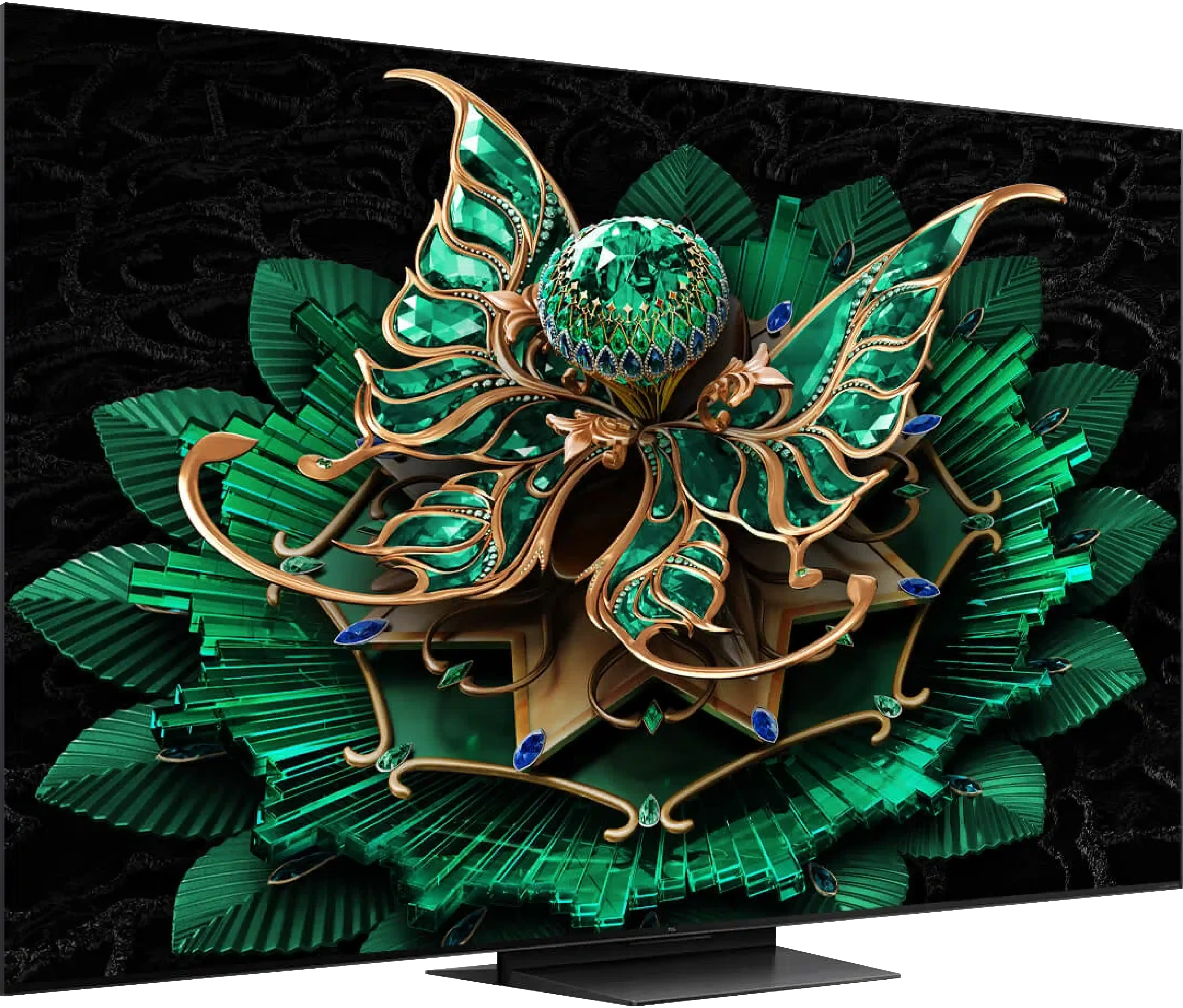
Panel type: WRGB OLED
Resolution: 3840x2160
System: WebOS
Model year: 2024
Complete the survey to find out the result

Panel type: LCD VA
Resolution: 3840x2160
System: Google TV
Model year: 2025
Complete the survey to find out the result

Overall rating
8.1
7.1
Movies and series in UHD quality
8.1
6.7
Classic TV, YouTube
8.8
6.5
Sports broadcasts (TV and apps)
8.6
6.4
Gaming on console
9.3
8.5
TV as a computer monitor
7.6
8.4
Watching in bright light
5.7
6.1
Utility functions
9.0
7.7
Apps
8.7
9.6
Sound quality
7.1
7.0
Complete the survey to find out what fits your preferences
Advantages
Reference colour mapping after calibration
Very good image compliance with the director's intentions
Excellent compatibility with consoles and PCs
Advanced motion smoothing system
Deep and vivid image
Advanced WebOs system and "mouse" remote control
Very good black - VA panel with a large number of Mini-LED zones
High brightness in HDR - over 1000 nits
Excellent for gamers - HDMI 2.1, low input lag, VRR, ALLM, etc.
Good motion smoothness - 144Hz panel
Supports multiple HDR formats: HDR10, HDR10+, Dolby Vision
Google TV operating system with access to a vast array of applications
Pleasant sound from built-in speakers
Disadvantages
Visible tonal transitions
Google TV can operate with minor stutters
No USB recording and PiP functionality
Our verdict
There are televisions that come for testing, and you immediately think: “oh, just another average one, probably like many others.” And basically… that’s true. The TCL C7K doesn’t try to dethrone OLEDs, nor does it shout from the box “revolution!” Yet, after a few days of testing, it’s hard not to think: “wow, this is really good equipment.” And that’s exactly what the C7K is. The biggest asset of the C7K is its decent picture at a reasonable price – MiniLED and quantum dots do their job here. The colours are vibrant, the brightness satisfactory, the contrast impressive, and with the right settings, you can truly enjoy viewing in the best quality. The second strong point is the smoothness of motion – both in sports and games. Support for HDMI 2.1, variable refresh rates, 144 Hz, and a whole host of other features make gaming on this TV a pure joy. Then there’s Google TV, which – despite some minor shortcomings – provides access to nearly an endless library of applications. Voice control, quick access to YouTube, Netflix, AirPlay support – it has everything you need for everyday use. Are there downsides? Of course. The Google TV system can have moments of “hesitation,” and MiniLED – being MiniLED – can stumble on very complex film scenes. But these are details. After all, the C7K is a mid-range model – and in this class, it performs simply excellently. So if you are looking for a reasonably priced, modern television with Google TV that looks good, works well, and plays quite decently without ruining your budget – the TCL C7K definitely deserves your attention.
TV appearance





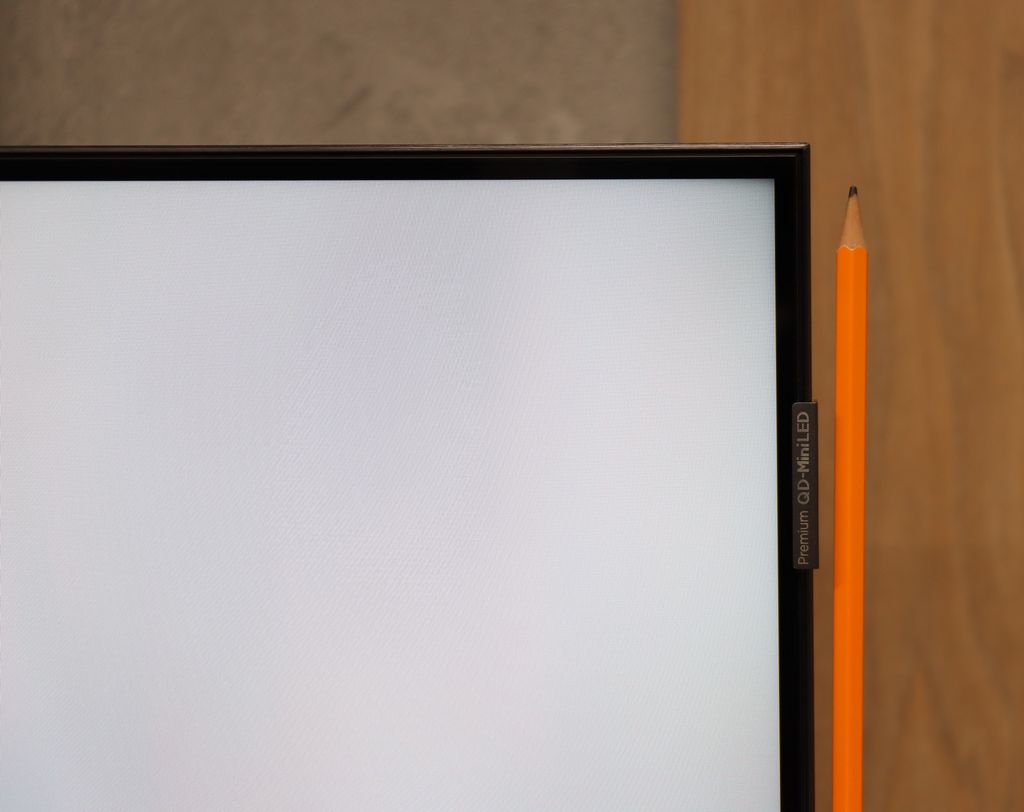
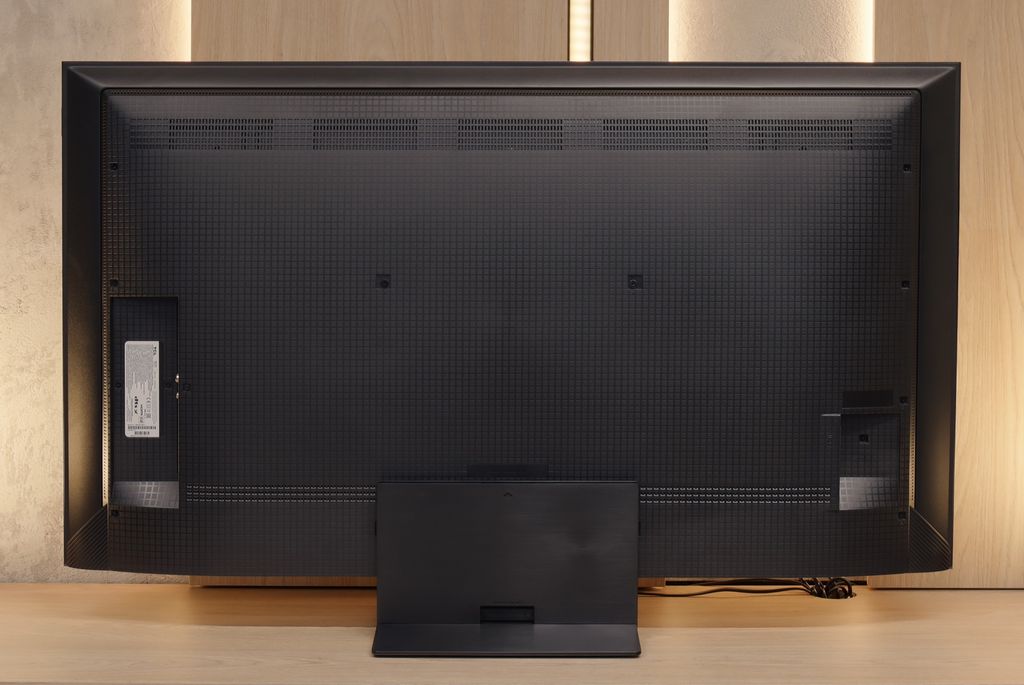
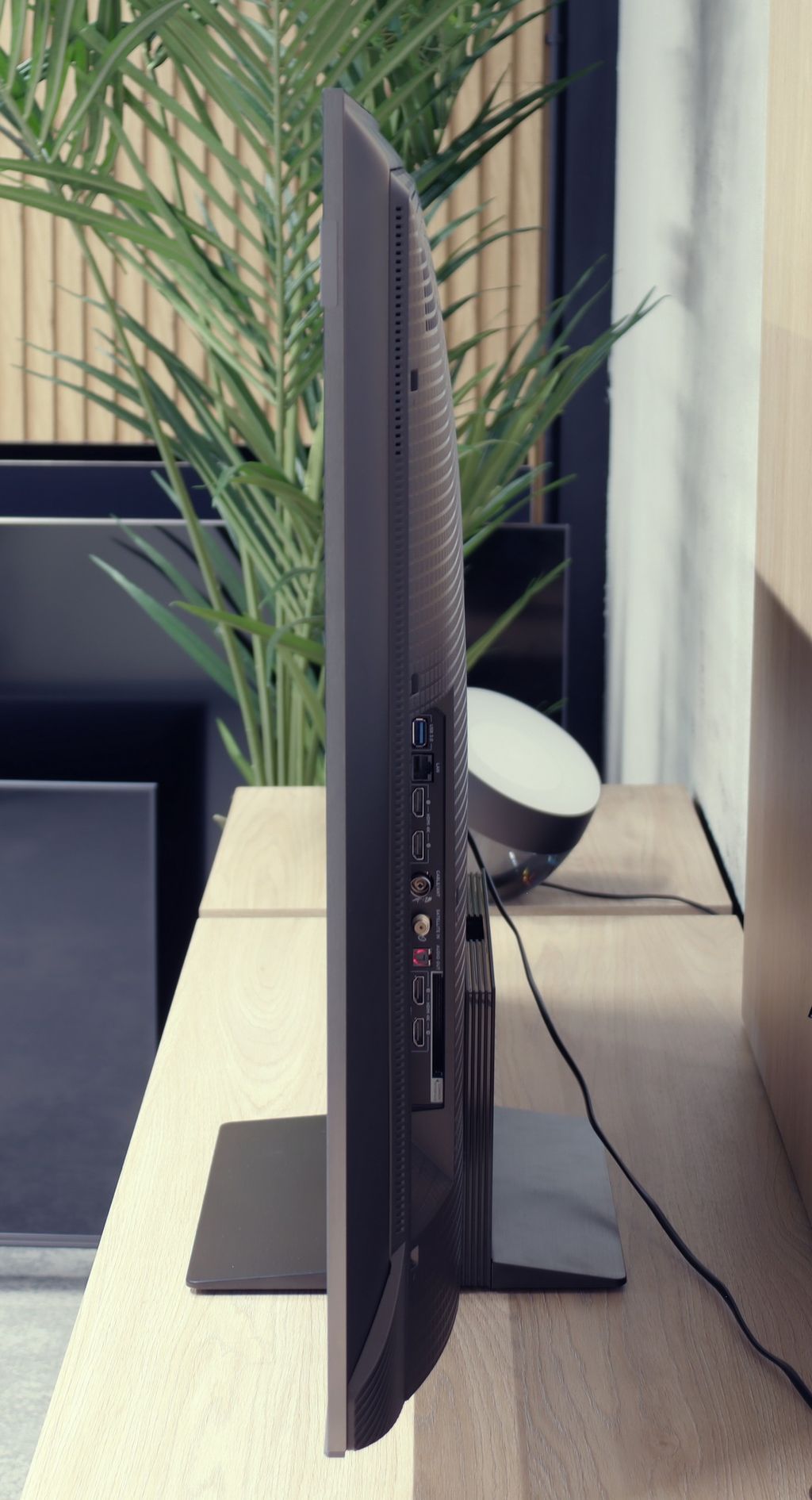
Contrast and black detail
10/10
7.1/10
Local dimming function: Yes, number of zones: 336 (14 x 24)
Contrast:

Result
∞:1

Result
∞:1

Result
∞:1

Result
∞:1

Result
∞:1

Result
161,000:1

Result
18,750:1

Result
13,150:1

Result
6,300:1

Result
4,200:1
Halo effect and black detail visibility:

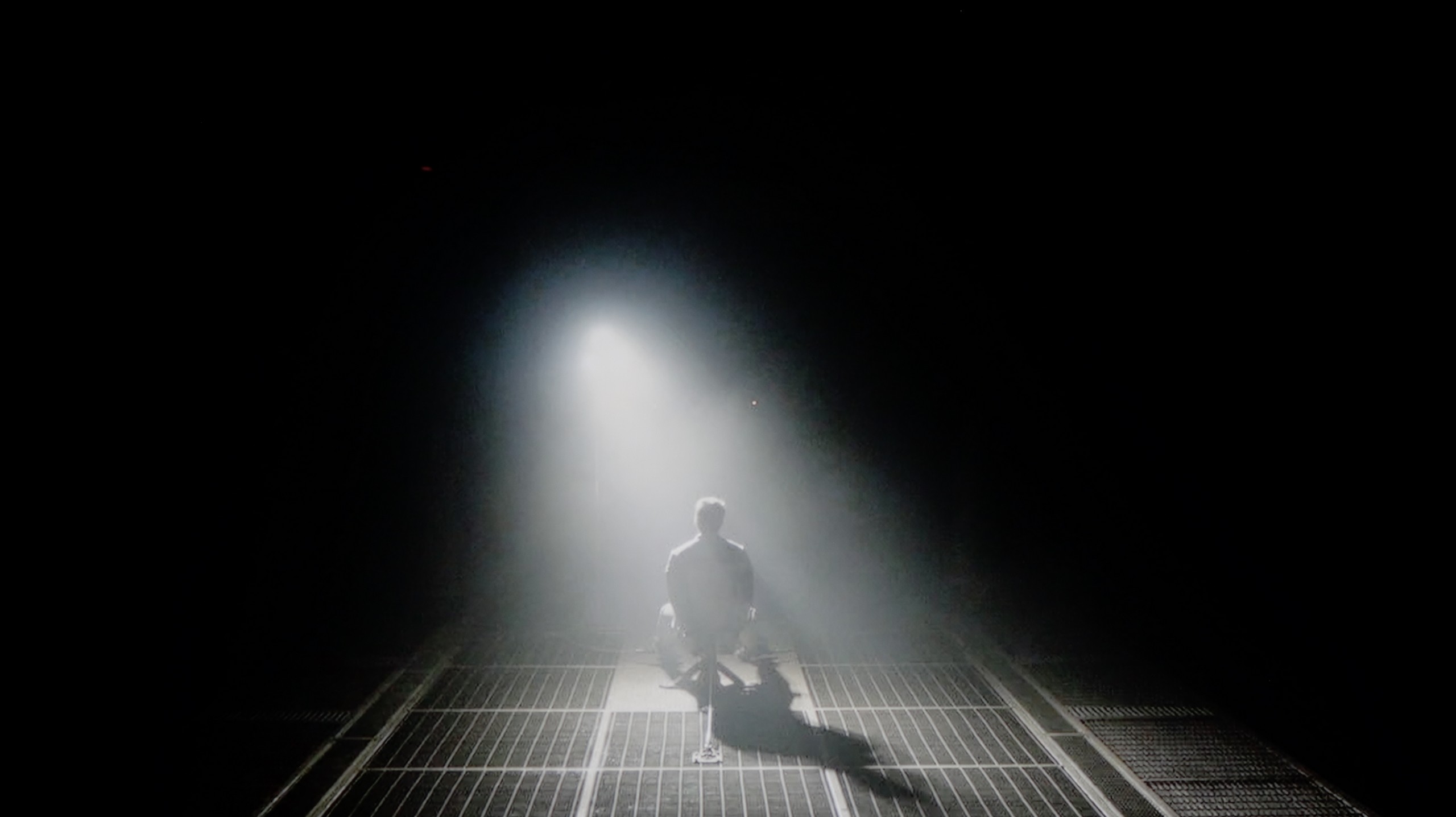
LG B4 uses OLED panels produced by LG Displays. The use of this type of panel provides us with perfect contrast and black levels. With such conditions, the picture is incredibly vivid and one might even get the impression that it is three-dimensional. The series of the manufacturer with the letter "B" has always been an ideal solution for those seeking very good picture quality while not wanting to pay extra for features that are only available in higher series. Therefore, these models have become something of a dark horse in this price range, as their advantageous pricing primarily competes with Mini LED televisions. It is not difficult to say that these models have won these battles due to the absence of characteristic flaws associated with LCD receivers with multi-zone backlighting, such as blooming/halo effects or dimming of images containing fine bright details. And as we can see in the test scenes from the films "Oblivion" and "Sicario 2," the fidelity is at the highest level. Looking at the first one, we see a spectacular play of lights that, despite their brightness, are perfectly separated from one another. Even a more challenging scene with a helicopter poses no problem for LG B4, showcasing a wealth of details and a unique colour grading specific to this title.
The 50-inch TCL C7K that we tested surprised us right from the start – it’s the smallest model in the series, yet it comes equipped with a VA panel with MiniLED backlighting and – attention – as many as 336 dimming zones. For comparison: many significantly larger televisions from higher tiers would be eager to boast such a number. Here we have it in the 50-inch version. Sounds promising, doesn’t it? So how does this translate into real movie-watching experiences? In the vast majority of tested scenes – very well. The contrast was high enough that it reached even six-digit values in measurements, which practically means very deep blacks and well-separated highlights. In scenes from films like The Revenant or Oblivion, the effect was impressive, matching the best LCD screens in this class.
However, not everything went perfectly. Despite the impressive number of zones, managing them was not always exemplary. In more complex scenes, where small light sources or a high level of detail appeared, the television had issues with the so-called halo effect (a glowing halo around bright objects) or overly aggressive dimming of the image. In such situations, contrast could either collapse due to overexposure of certain zones or, conversely – details in bright areas disappeared because the zones suppressed the light too much. Nonetheless, it is worth noting that in the vast majority of scenes, the contrast was more than satisfactory. And taking into account the size of the television and the price, the final effect will satisfy not just average users.
HDR effect quality
6.3/10
5.4/10
Luminance measurements in HDR:

Result
664 nit

Result
650 nit

Result
677 nit

Result
662 nit

Result
410 nit

Result
1051 nit

Result
185 nit

Result
454 nit

Result
200 nit

Result
836 nit
Scene from the movie “Pan” (about 2800 nits)

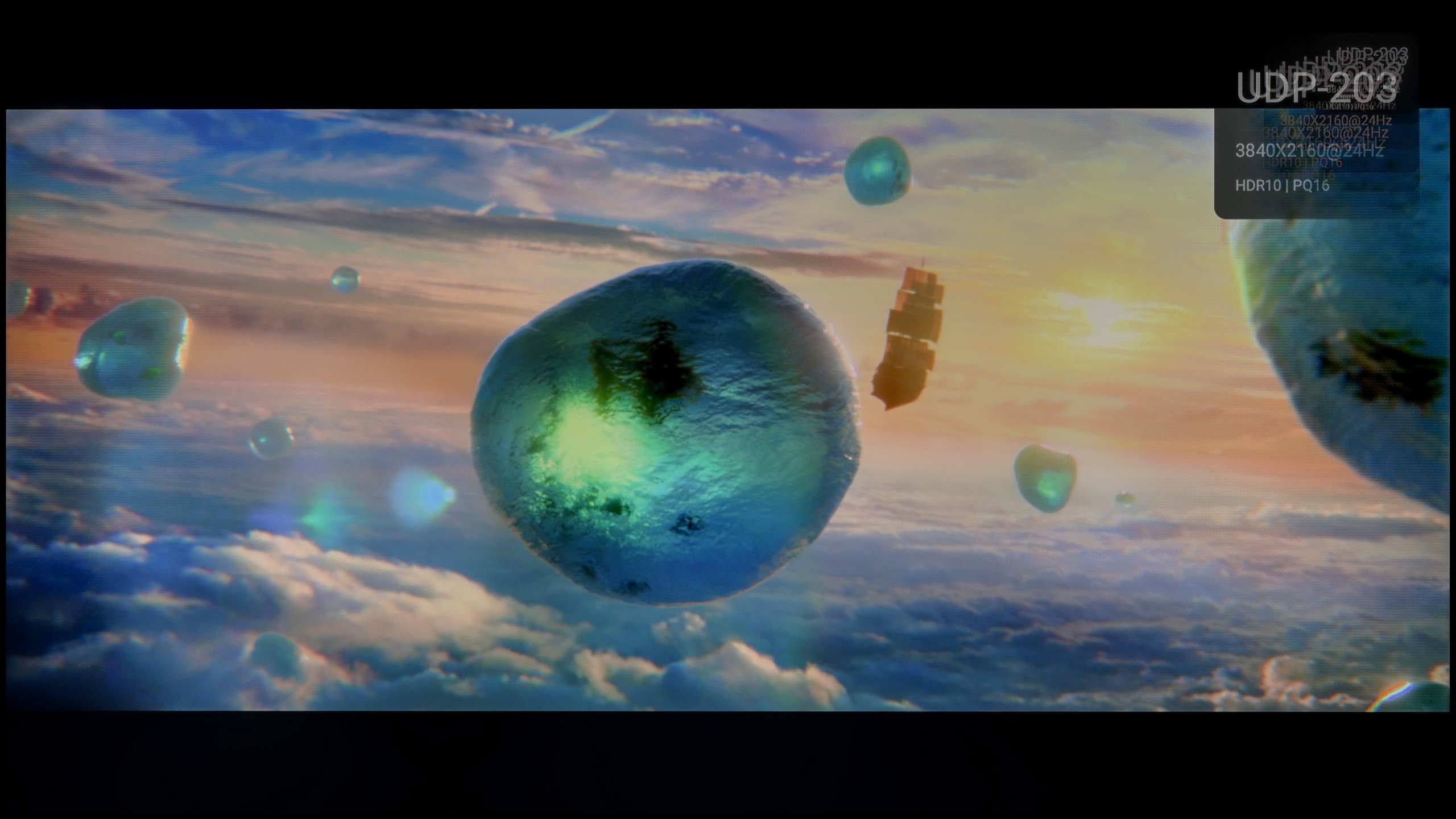
Scene from the movie “Billy Lynn” (about 1100 nits)


Static HDR10


Dynamic: Dolby Vision
Dynamic: Dolby Vision


HDR luminance chart:
TCL C7K / QM7K
Luminancja HDR
Luminance of RGB colors
LG 55 B4
Luminancja HDR
Luminance of RGB colors
The brightness results in HDR materials for LG B4 are very good. It is true that none of them exceed 1000 nits, although the stability of luminance is excellent and looks practically the same in every scenario. The only moment where the tested television performs worse is the last of the scenes, although this should not be surprising. Large frames filled with a lot of white have always been, and probably will continue to be, somewhat of a weakness for OLED televisions. However, the combination of perfect contrast, black levels, and brightness of LG B4 allows for a full experience of the HDR effect. Additionally, the incredibly high coverage of the DCI-P3 colour gamut deserves recognition, reaching 99%. This makes the colours look incredibly vivid and striking.
TCL C7K is one of the brightest MiniLED televisions in its price range. Under the best testing conditions, the screen managed to achieve over 1200 nits, resulting in impressive, at times almost blindingly bright scenes. And most importantly – this is not just a theory based on measurements. In practice, the brightest parts of films can shine with true cinematic grandeur. Fans of home HDR cinema should be truly satisfied.
The impression is excellent, especially in scenes with large areas of brightness – a white sky, explosions, sun reflections, or magical sunsets can surprise with an intensity of light that is rarely seen in this price range.
However, it gets a bit worse when more challenging scenarios appear on the screen, as described when discussing contrast – that is, images full of details, with small, bright elements on a dark background. In such cases, the C7K often decides to preserve black levels at the expense of brightness. An example? Scenes from the films Sicario 2 or Life of Pi, where small light sources (like a distant lantern) can become less visible, and details in the lights are simply dimmed or blend into the background.
For many viewers, this may be an acceptable compromise – as we achieve deep black levels and a pleasing plasticity of the image. Nevertheless, it is worth being aware that the visibility of small details in bright areas is not this model's strongest suit. It is simply a technological limitation that still exists – even with over 300 zones.
Factory color reproduction
8.4/10
6/10


Factory Mode
After calibration
The best factory mode prepared by the manufacturer is "Filmmaker," which is exactly what we used throughout the entire testing procedure. We must admit that the unit we received out of the box had quite good colour reproduction. The biggest problem in both SDR and HDR content turned out to be white balance. In the former, a strong red hue was evident, causing the displayed image to have a pronounced yellow tint, particularly noticeable on skin tones and whites. In higher quality materials, this colour was also accentuated, but due to a lack of blue, there were also signs of green visible. Apart from these issues, we also encountered problems with grayscale and the colours themselves.
A new feature in TCL televisions for 2025 is the long-awaited Filmmaker mode, which until now has been found in most competing brands. This is great news, as this mode is considered to be the truest to the original vision of the creators and is often recommended by enthusiasts of good picture quality. Unfortunately, as is often the case, the mere presence of this mode does not guarantee perfection. The Filmmaker mode in the TCL C7K is not without its flaws. There can be criticism of the incorrect white balance, particularly a slight dominance of blue, which resulted in cool, somewhat greyish skin tones. But that was not the biggest issue. The main complaint was the excessive brightness exposure, which is clearly visible on the gamma and EOTF graphs. The image was simply too bright, at times even blown out, which affected not only the texture of scenes but also the overall viewing experience. Some details were simply lost, and the entire image looked as if someone had slightly overcooked the brightness slider. As always, we decided to check what could be extracted from this after calibration. And that’s where it started to get really interesting…
Color reproduction after calibration
9.3/10
7.5/10

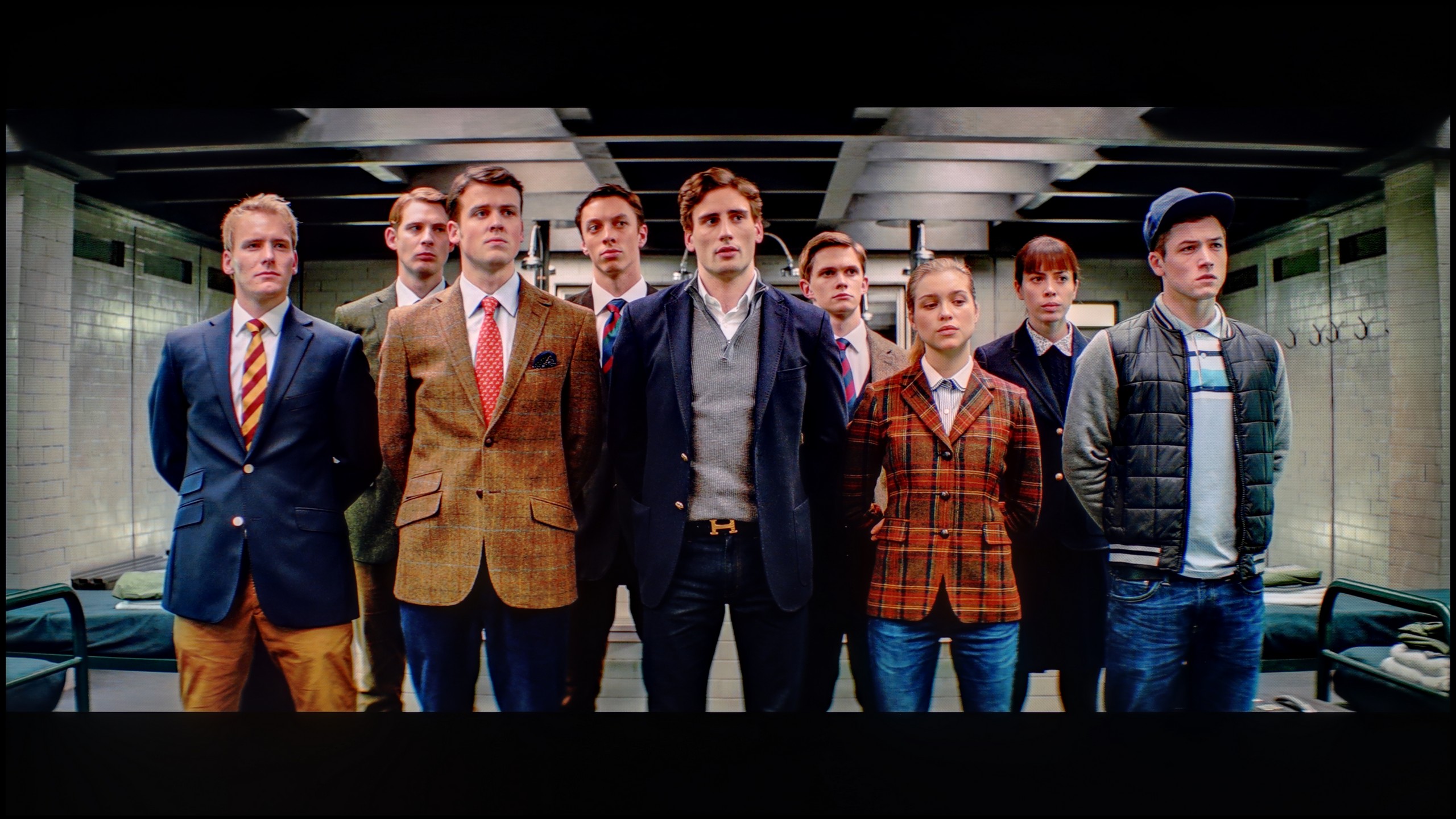

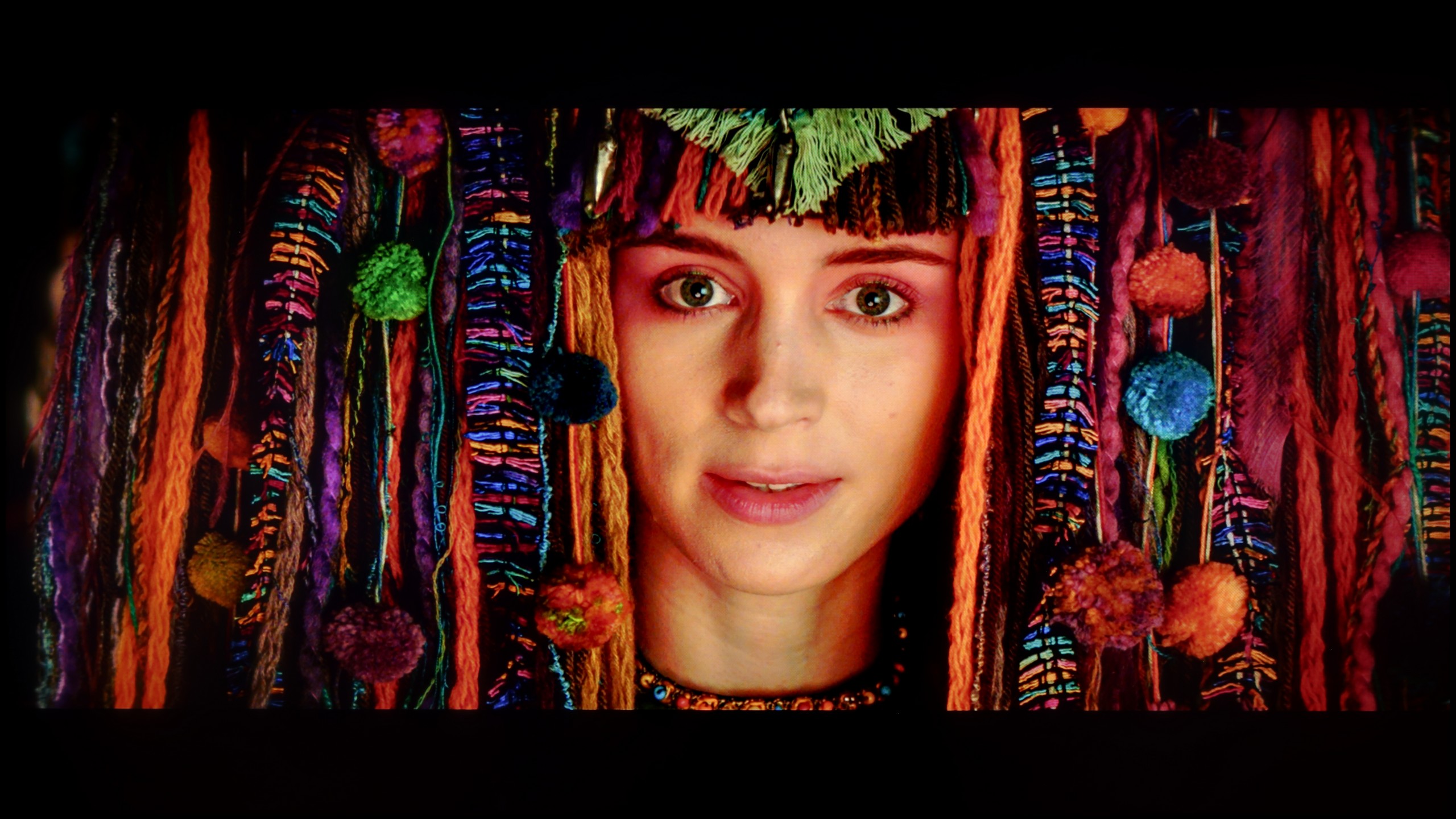
LG B4 has been providing very advanced calibration tools in its televisions for years. We can even say that as the only manufacturer on the market, it allows for such deep intervention in image adjustment. It is thanks to these tools that we were able to calibrate the device so well. Evidence of this is the extremely low deltaE errors, which can be said to be at a reference level. Both SDR and HDR materials now look exactly as intended by the film director. It is no coincidence that televisions of this brand are most often used as preview screens for various graphic or post-production studios.
After calibration, the TCL C7K showcased itself in a really good light, especially when it comes to SDR content. We managed to precisely tune the white balance, colour gamut, and brightness characteristics to the point that colour errors on the ColorChecker palette dropped below a value of 2. For the uninitiated – this is nearly a perfect result, which means that the image is very close to what the creators intended. Unfortunately, the situation was worse with 4K HDR content. Although we managed to gently stabilize the white balance and correct its previous errors, it was still evident that the television has certain "MiniLED traits," especially in brightness management. When we checked how the C7K handled the EOTF curve on actual film scenes, rather than just on synthetic test patterns, it turned out that the screen still tends to slightly brighten the entire image. This impacts the overall experience – blacks lose some depth, and the image becomes less contrasty than it should be. Despite these minor shortcomings in HDR content, the overall reception of materials – especially in SDR – is truly very good. After calibration, the C7K can display an image that can compete successfully with much more expensive models. Good colour tuning, natural skin tones, and pleasant brightness make movie sessions and everyday viewing of content more than satisfactory.
Smoothness of tonal transitions
7.4/10
8.6/10







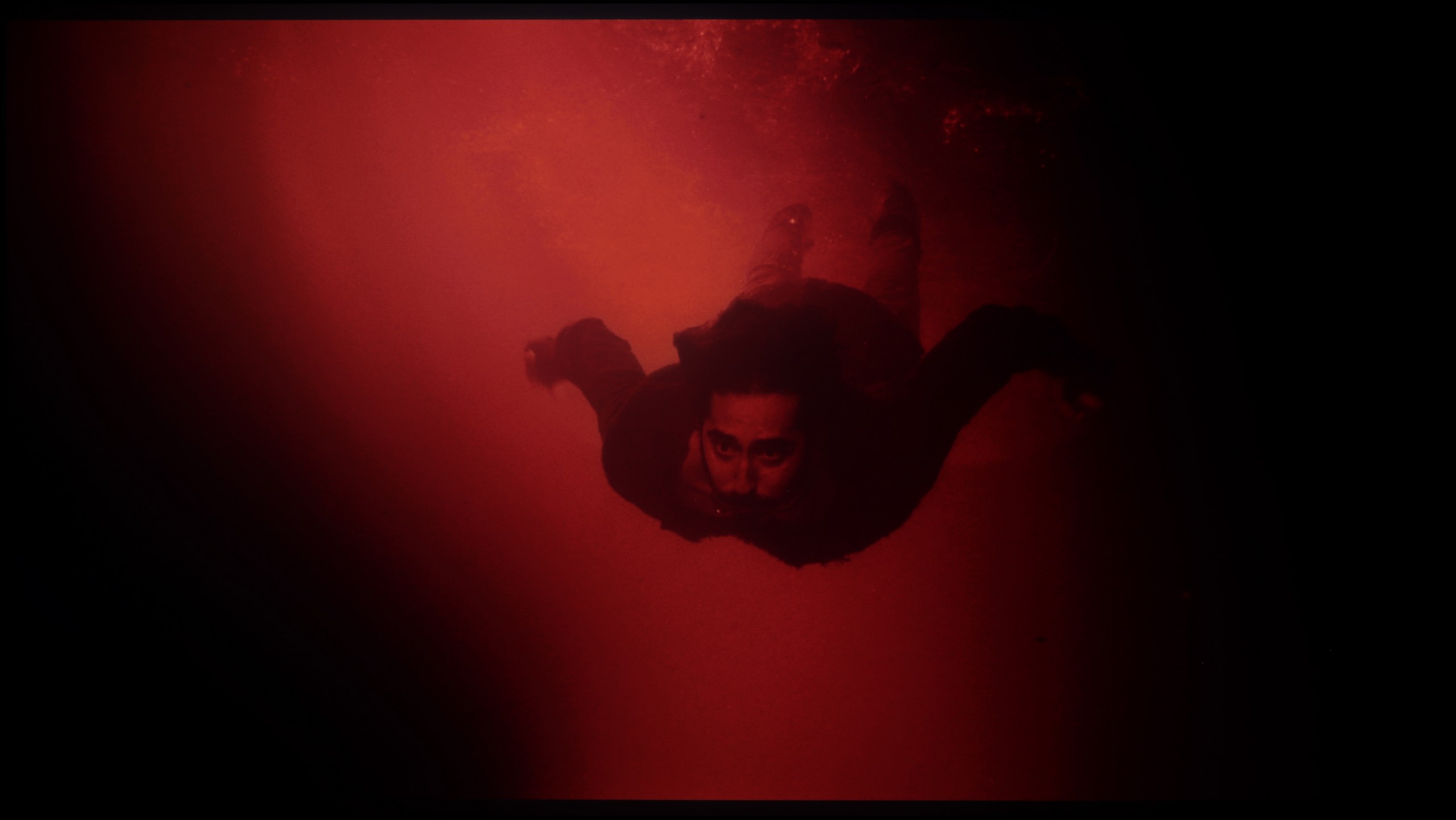




The fluidity of tonal transitions, often overlooked in various tests on competing portals, is an equally important aspect of image quality assessment. It is particularly important when watching material that features a wealth of colours and many intricate effects, where textures blend. This often leads to the so-called banding of colours, which is a lack of smooth gradation. The tested television handles tonal transition smoothing quite well. However, it is worth noting that it has its weaker moments, such as a bright coloured sky in the film "Kingsman" or "The Martian". Nevertheless, these are not aspects that detract from the viewing pleasure. Therefore, we positively assess the quality of tonal transitions in LG B4.
The TCL C7K handles colour gradation very well – in most of the tested scenes, tonal transitions were smooth, and colours blended together without visible outlines or the artificial "blot" effect. In everyday use, it's hard to find anything to criticise – the picture looks natural, without annoying transitions or digital artifacts. Certain limitations only arise in very dark tones – particularly in a heavily muted grey palette, where the television may struggle to reproduce the ideal gradation. But this is absolutely understandable, as even many significantly more expensive models in this regard simply falter. Fortunately, these situations are rare and do not significantly impact the overall impression.
Image scaling and smoothness of tonal transitions
7.9/10
5.5/10
Smooth transition function


Image without overscan on the SD signal


In this paragraph, we will take another look at the function for smoothing tonal transitions, but we will also check how the television handles lower quality material. As we have managed to verify, the setting responsible for smooth gradation works quite efficiently, although it has its weaker moments. Just as the function works correctly in SDR content, it becomes rather useless in HDR content. Even at the lowest of the options, it blurs essential details, which is why we advise against using it.
The image scaling on LG B4 is rated rather moderately positively. Although there is no edge doubling, the image itself is naturally "soft." We can change this by adjusting the sharpness slider.
TCL C7K is equipped with a feature that, according to the manufacturer, is meant to smooth out unwanted colour transitions – a sort of rescue for less successful tonal shifts. It is called "Gradual Smoothing" and… well, it sounds ambitious, but in practice it works very poorly. Regardless of whether we set it to a low or high level, the difference is minimal. Worst of all, the feature can cut out elements from the picture that should be there. Fortunately, film grain remains untouched, so at least it doesn’t smooth everything indiscriminately, but still – it’s better to simply turn this option off.
When it comes to scaling lower resolution content, it is somewhat better. SD and HD materials look quite decent, although at times we had the impression that the image loses sharpness and becomes too soft – as if something took away its definition. Fortunately, with very low sources (e.g. 576p), there was no overscan effect, meaning the picture was not artificially cropped – everything fit on the screen as it should.
Blur and motion smoothness
8.5/10
7.5/10

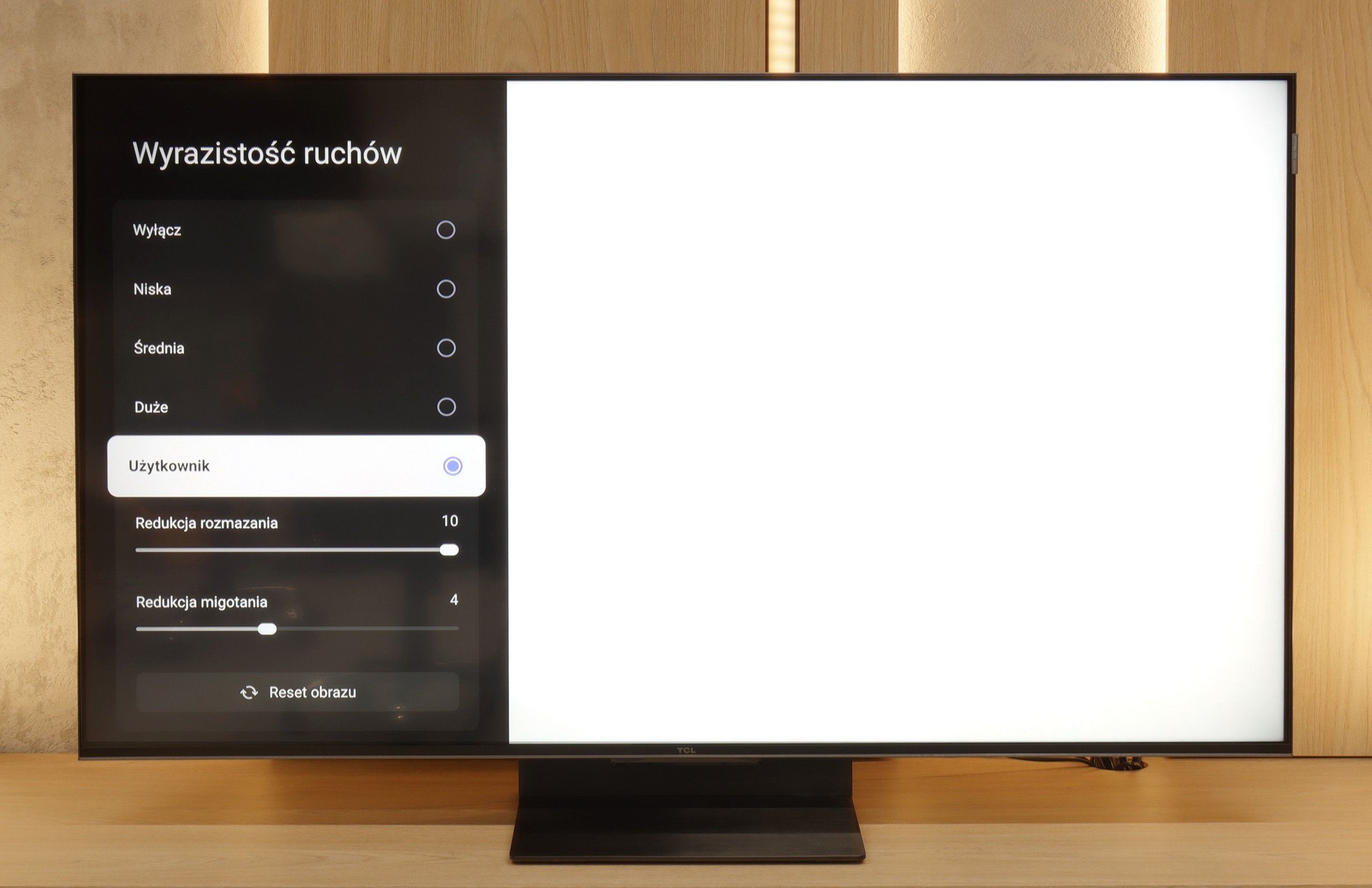
Blur (native resolution, maximum refresh rate):



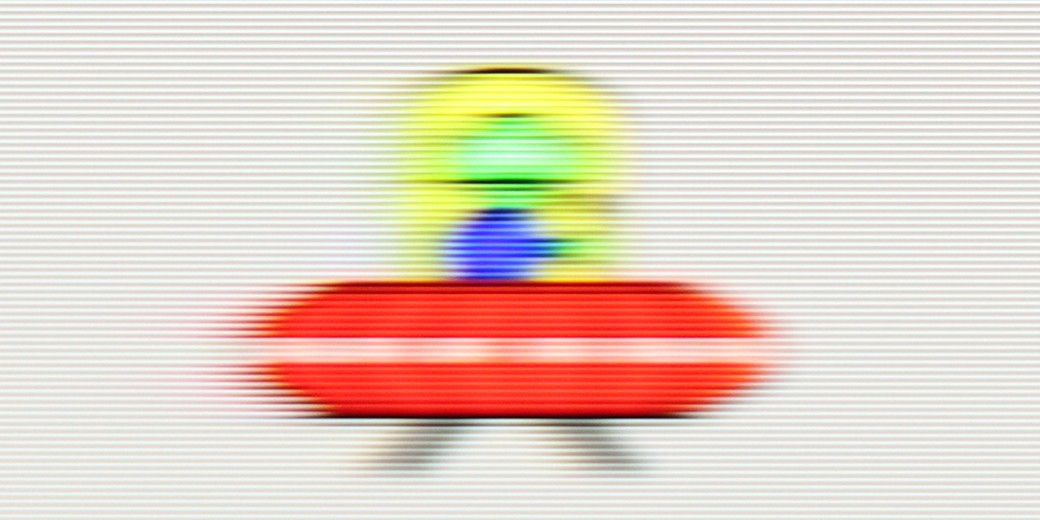
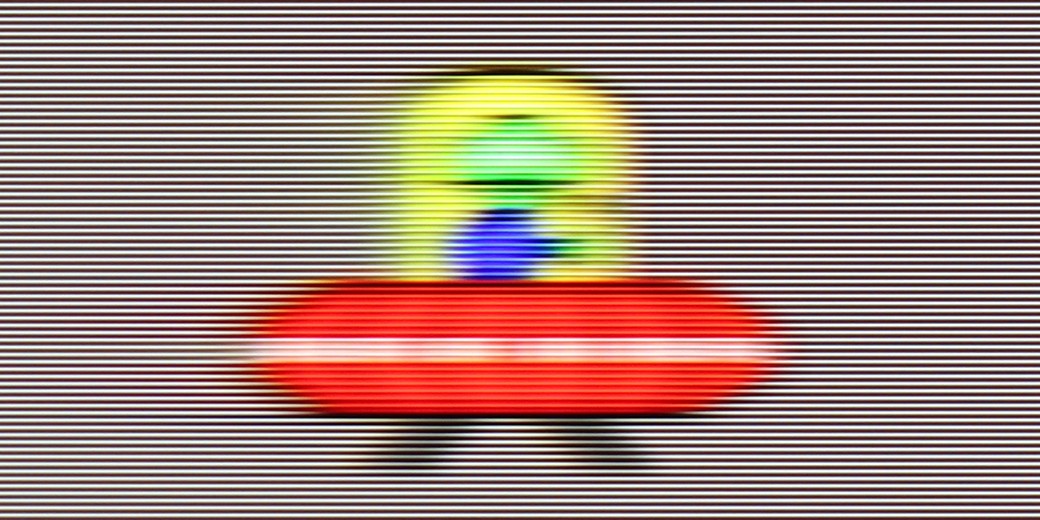
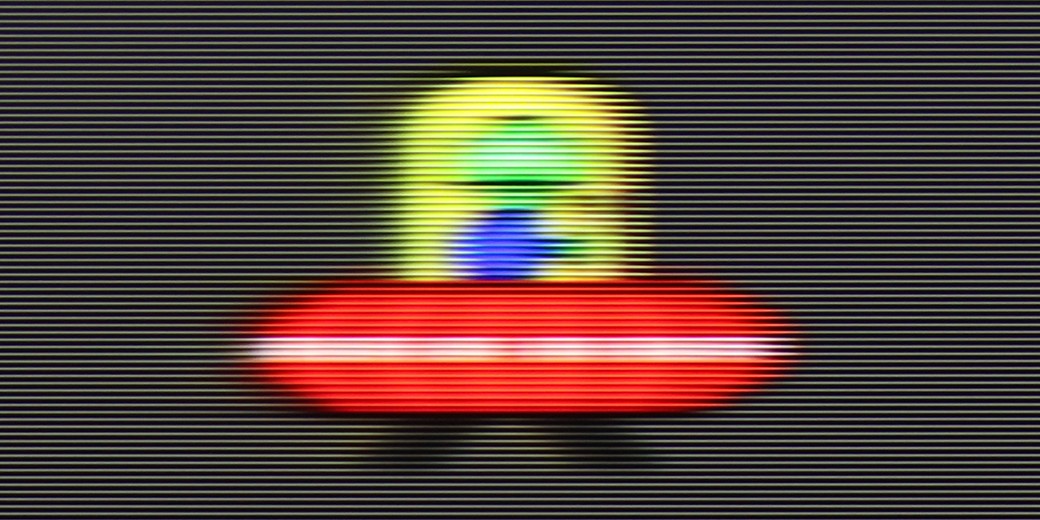
Blur (BFI function enabled):






Smużenie ():
Smużenie (4K 144Hz):

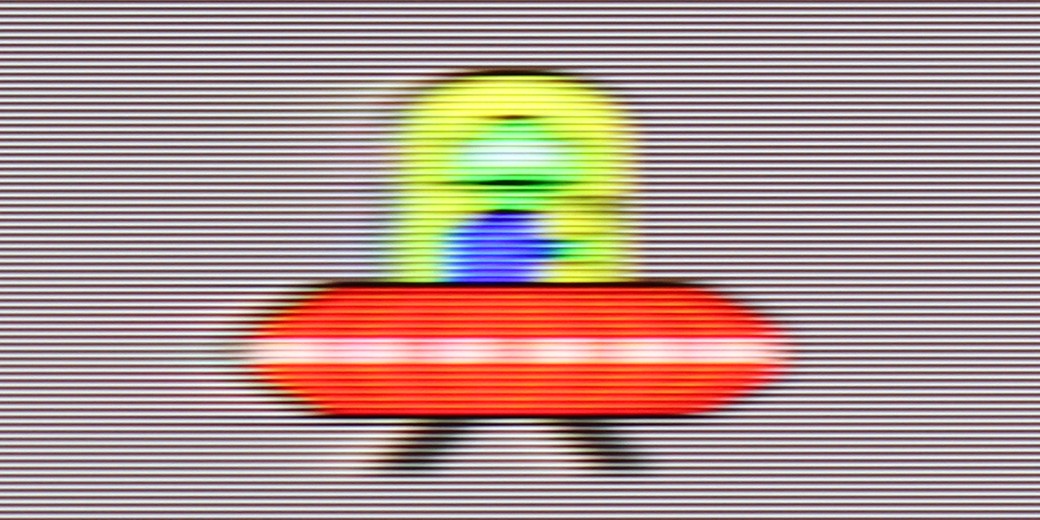
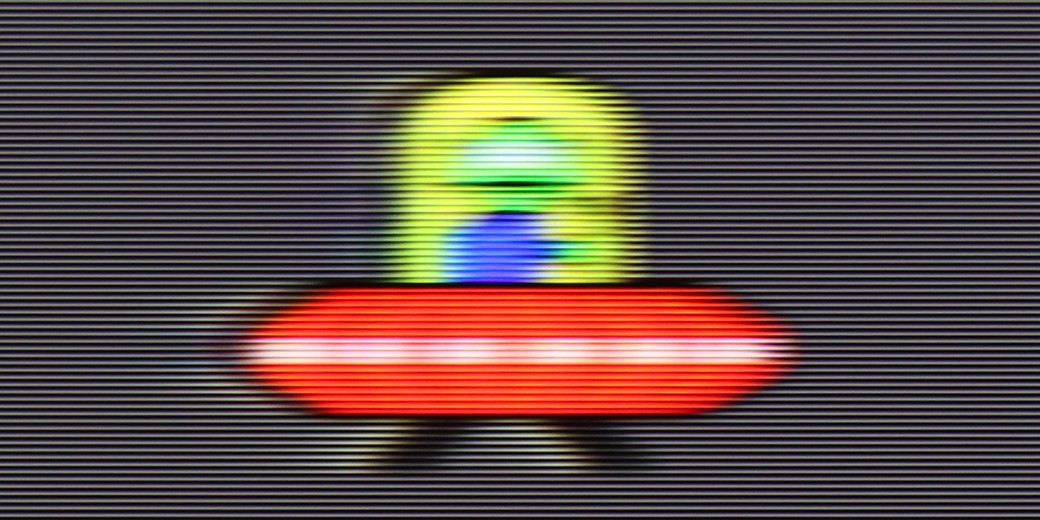
The maximum refresh rate that we can set on the LG B4 is 120 Hz. This is the absolute minimum for those requiring high image fluidity. The manufacturer has implemented a multi-step motion smoother called "TruMotion". It has been divided into two separate sliders adjusting the sharpness of moving images (De-Blur) and jitter (De-Judder). Both sliders can be set in the range from 0 to 10, with each degree affecting the level of fluidity, so everyone can find their golden mean.
The LG OLED B4 panel features an average response time of 0.1 ms (which directly results from our measurements), allowing for an incredibly clear image, unattainable for LCD televisions, whose response times can be as high as several milliseconds. This is clearly evident in the pictures from the "UFO Test", showing no trail following the object.
The TCL C7K handles motion fluidity really very well. The matrix used in it offers a refresh rate of 144 Hz, which in itself suggests that this television is more than just a regular "60 Hz" panel. Furthermore – if we connect the C7K to a computer and set the resolution to Full HD. But we'll write more about this in the paragraph about gamers and PC collaboration. Returning to everyday use – both sports and films look very good here. Thanks to the fast panel and well-functioning motion smoothing, the C7K is great for watching matches, but also for movie screenings. In the menu, we find two sliders – motion blur reduction and flicker reduction – which allow us to adjust the fluidity effect to our own preferences. At lower settings, we get a more cinematic effect, with slight stuttering motion. At higher settings – the picture becomes more theatrical, fluid to the point of excess. Everyone has their own preferences – anyone can set it to their liking.
Console compatibility and gaming features
10/10
9.8/10
- ALLM
- VRR
- VRR range40 - 120Hz48 - 144Hz
- Dolby Vision Game Mode
- Correct implementation of HGIG
- 1080p@120Hz
- 1440p@120Hz
- 4K@120Hz
- Game bar

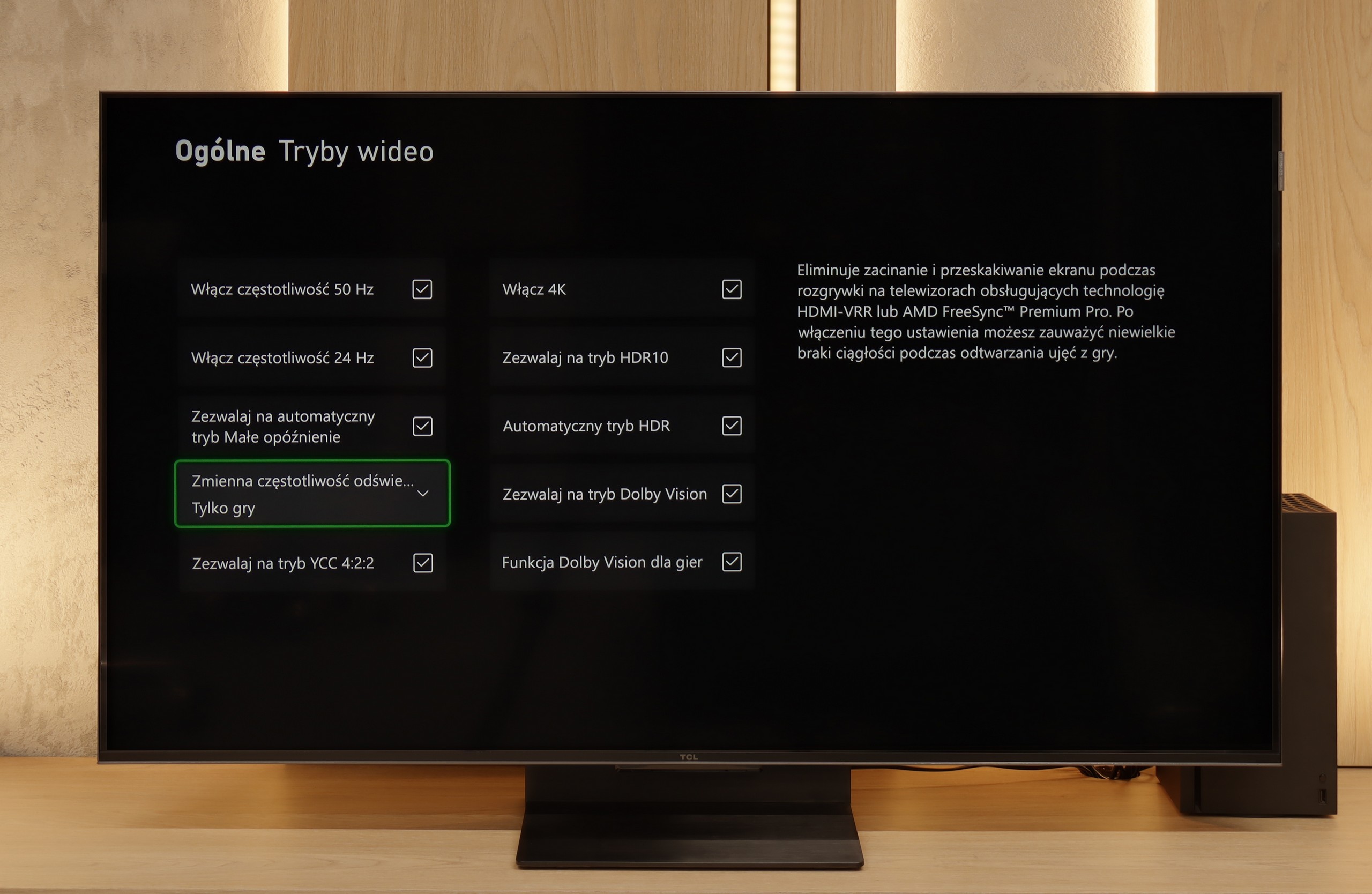

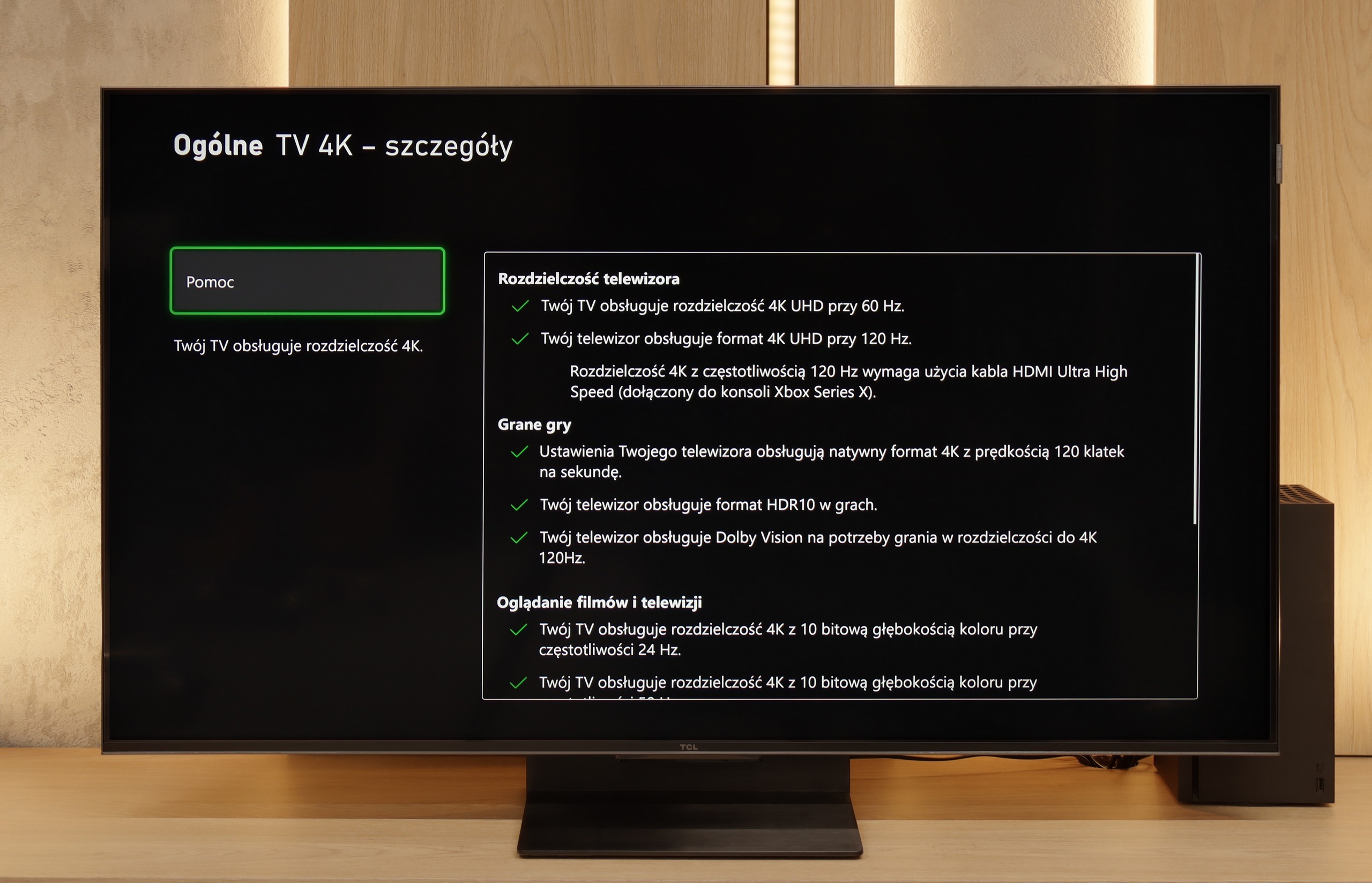

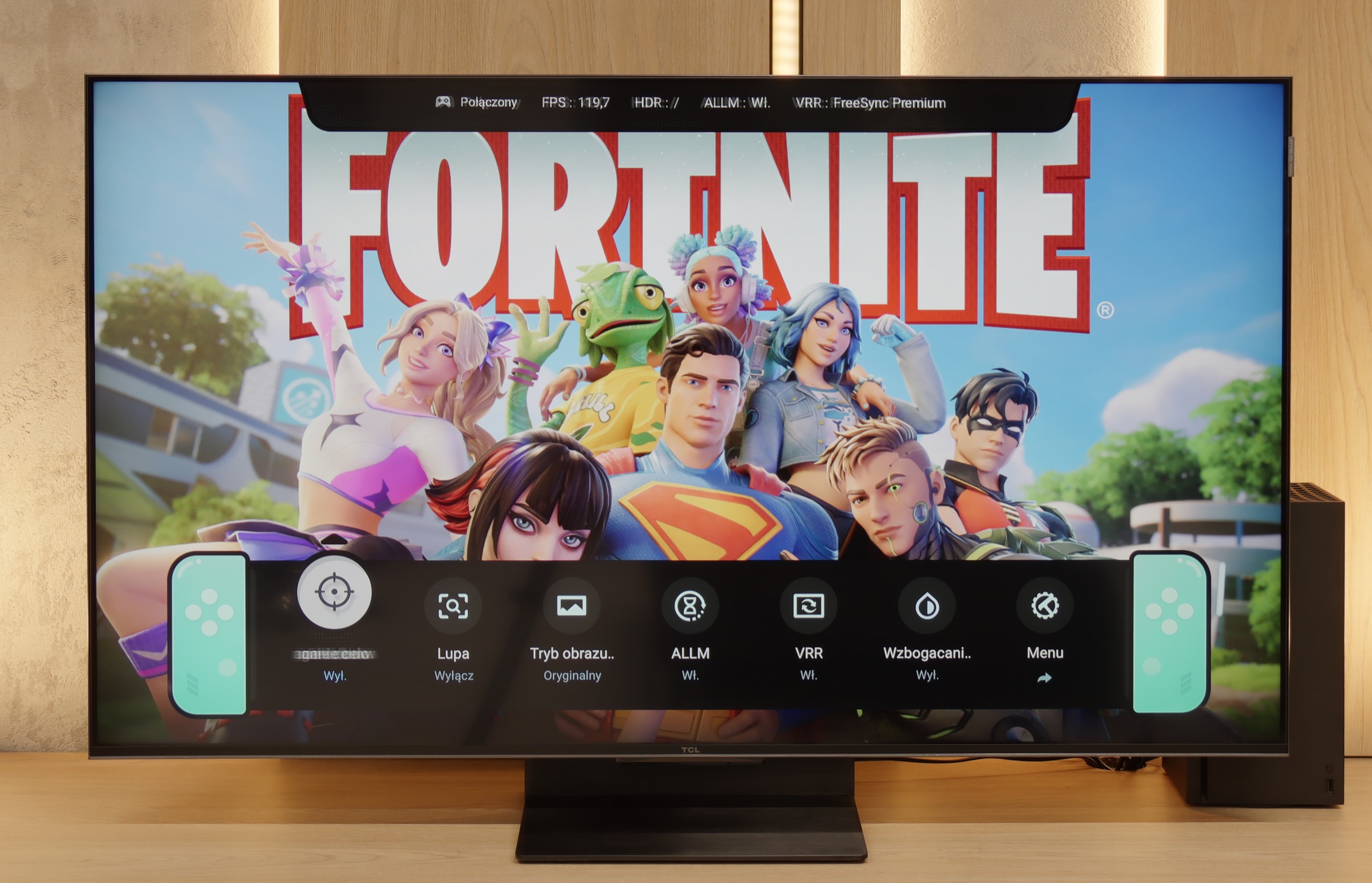

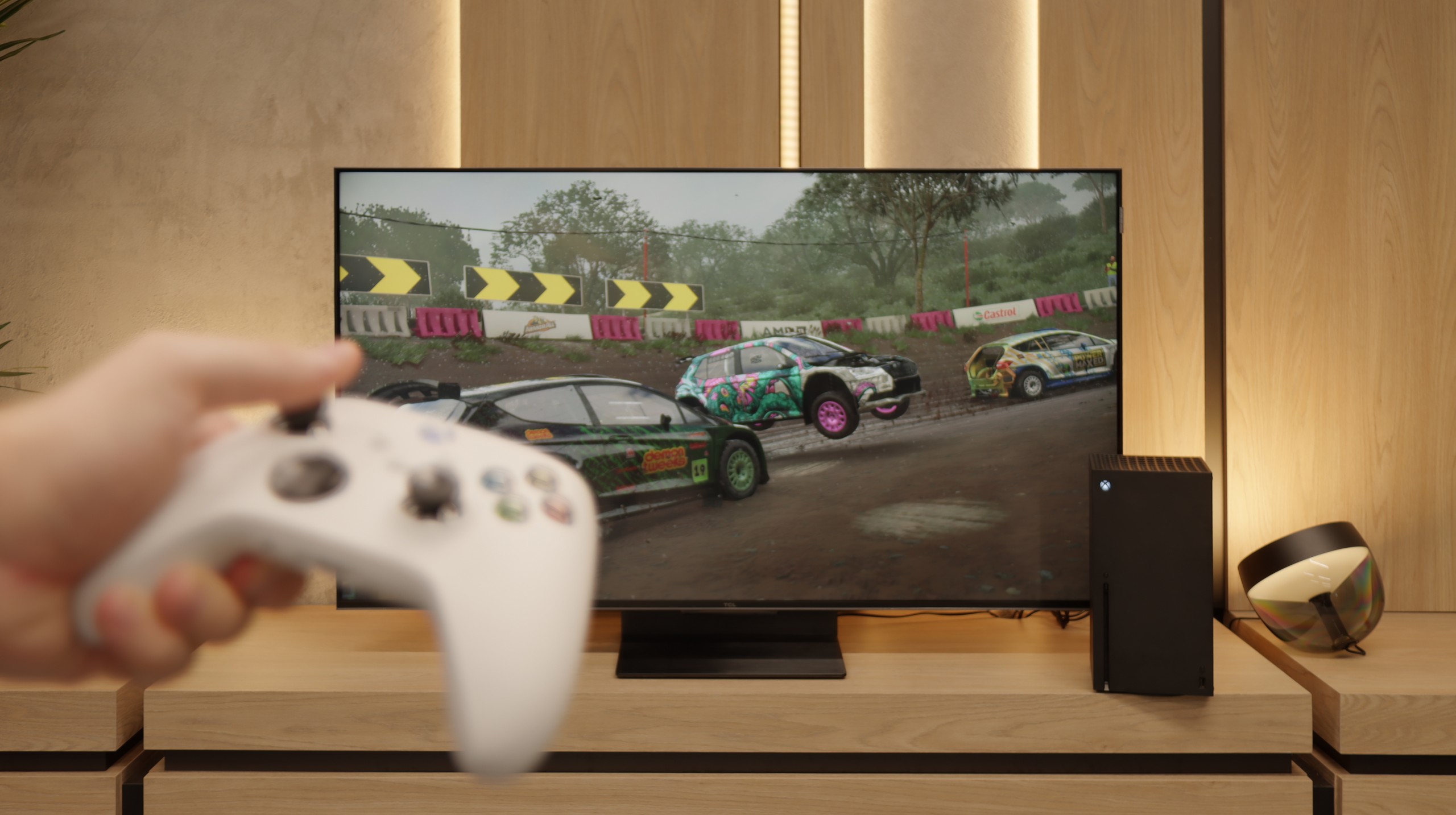
The LG B4 television is equipped with four fully-fledged HDMI 2.1 ports with a full bandwidth of 48Gbps. All features that are identical to this standard were activated without any issues, and throughout the entire testing process, they did not cause any problems. The combination of such extensive functionality and low input lag suggests that the tested television is truly made for gaming. This is not surprising, considering that the manufacturer has always placed great emphasis on this. Therefore, we can enjoy both the properly implemented HGIG mode and gaming in Dolby Vision with low latency. This pairing will certainly attract the attention of all passionate gamers for whom quality is paramount.
An additional standard in televisions from this Korean manufacturer is the implementation of GameBar, allowing for quick adjustment of settings "on the fly," without the need to exit the game. It also enables image adjustments for individuals with visual impairments, which is a very nice touch. Another important piece of information is that when VRR technology is enabled, we will not experience a drop in contrast. This is thanks to the construction of the panel and the lack of conventional backlighting. However, it is normal for shades of grey to flicker slightly; nevertheless, this is a characteristic feature of this function regardless of the manufacturer or television.
In summary: the LG B4, like all of the manufacturer’s OLEDs equipped with 120Hz panels and HDMI 2.1 ports, creates a harmonious whole with the console. In practice, this is a comprehensive television, and if we expect the highest possible efficiency in gaming, B4 will be the ideal choice.
The TCL C7K is a television that on paper appears to be the dream equipment for gamers – and most importantly, it holds up in practice too. To start with good news: there are two full-bandwidth HDMI 2.1 ports, so we can easily connect both a console and a computer, taking advantage of all their capabilities. The panel itself supports a refresh rate of 144 Hz, which gives a significant advantage in dynamic games. There is also a complete set of gaming features: VRR (variable refresh rate), ALLM (automatic low-latency mode), and support for Dolby Vision in games. There is also the HGiG mode, which allows for HDR effects consistent with the creators' intentions. GameBar, an information bar for gamers. It works quickly, looks clear (like a Nintendo console👌), and shows what matters most: the current frame rate, VRR status, and even HDR parameters.
Input lag
10/10
9.7/10
SDR
HDR
Dolby Vision
Input lag for the LG B4 is at an incredibly low level in every scenario. Even the most dedicated gamers will certainly appreciate the very low input lag at demanding 4K 120 Hz settings with HDR, which is just 5 ms. It is also worth noting that the lag at these same settings, but with Dolby Vision HDR enabled, remains consistent, which is not as evident with the competition. Therefore, it deserves the highest rating and recommendation.
When it comes to delays, the C7K gives no reason for complaints. In games at 120 Hz, input lag is around 10 ms, which means the television responds really quickly. And interestingly – even in Dolby Vision mode, the result is very similar, which is not always the standard. Good job, TCL. At 60 Hz, the lag does increase a bit, but that's completely normal and affects virtually every television with a refresh rate of 120Hz and above. The most important thing is that everything still runs smoothly and there’s no feeling that something is not responding to our actions.
Compatibility with PC
7.6/10
8.4/10

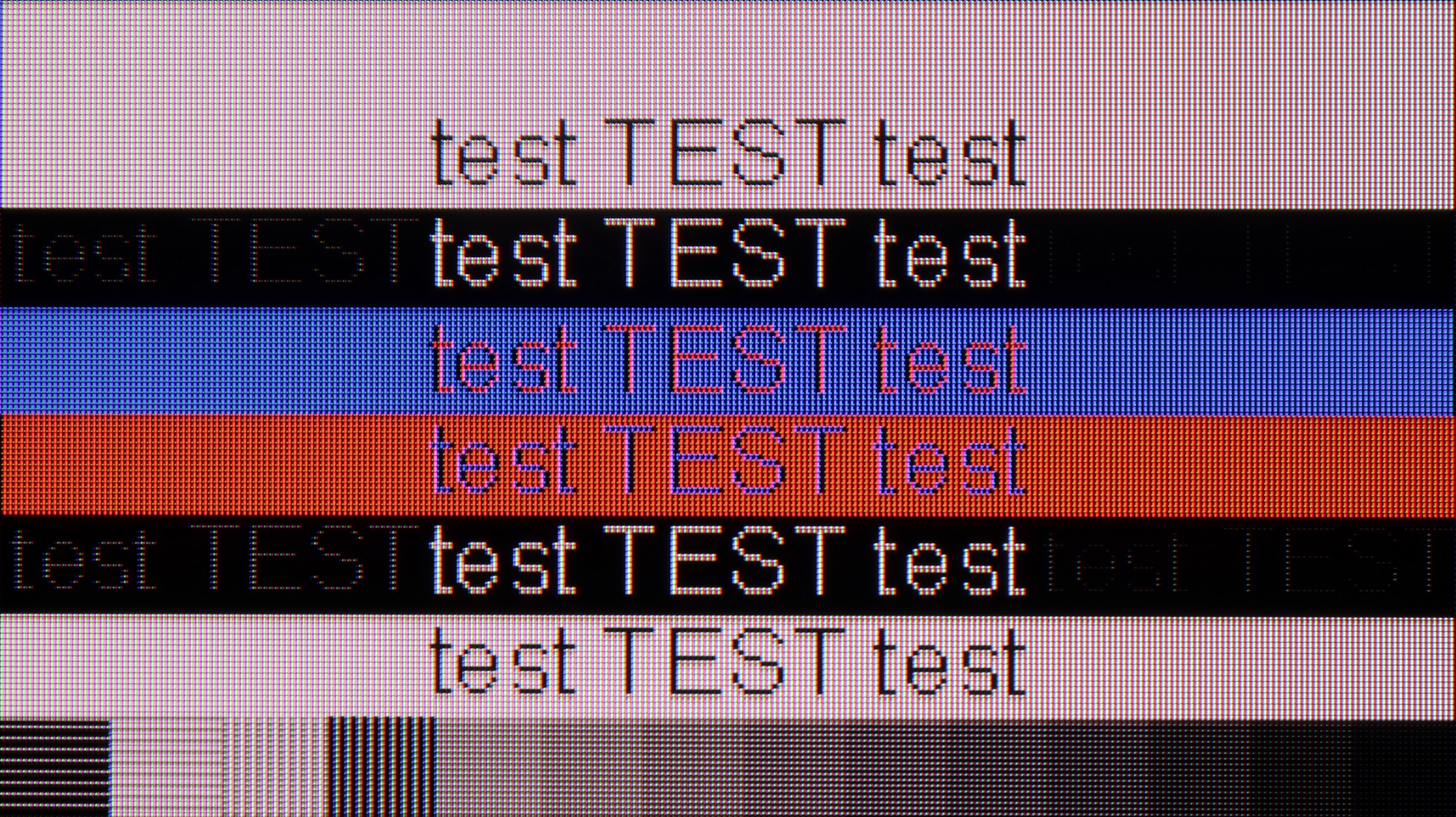
LG B4 combined with a PC performs excellently, thanks to a very low latency of just 13.5 ms, which is practically an instant response between the mouse, the eye, and the screen. An extremely important factor when working on a screen is primarily the readability of the text, which in the case of the tested television is very good. However, it is worth noting that to achieve sharp fonts, one must enable the passthrough option in the settings.
The RWBG pixel layout has no significant impact on the display of fonts or letters, which provides a considerable advantage over Samsung's QD-OLED matrices. Users of both Windows and macOS equipped computers are sure to be pleased with the performance on the screen of the tested television.
If we are going to connect the C7K to a computer – especially for gaming – there is definitely a lot to play for. We have 4K at 144 Hz, which already sounds great, but if we lower the resolution, the television can even display up to 280 Hz. In e-sports, where every fraction of a second counts, this really makes a difference. On top of that, there is support for G-Sync and FreeSync, so regardless of which graphics card we have – the image will be smooth, without any stuttering or tearing.
However, if we plan to place the C7K on a desk and use it like a monitor, it’s a bit less "rosy." Yes, it supports chroma 4:4:4, so fonts should be sharp, but with very dark letters, there is slight blurriness and dimming of the edges. This is not something that immediately stands out during gaming or watching, but when working with text – it can be distracting. In everyday use – it’s probably nothing to worry about, but if we plan to place a 50-inch screen a meter from our face, it’s worth keeping this in mind.
Viewing angles
7.4/10
3/10
The undisputed advantage of OLED panels is their performance in the context of group viewing, that is, from various angles. LG B4 maintains very good contrast, colour saturation, and fidelity. Although this is not the result of organic televisions supported by MLA technology, one cannot say that anyone who purchased the device was dissatisfied with the results obtained. However, it should be noted that at sharp angles, a slight greenish tint can be observed. This is a characteristic feature of LG's WRGB panels, without the aforementioned micro-lens technology, and unfortunately, there is nothing that can be done about it.
There are no surprises here – the C7K has classic viewing angles for a VA panel. That is: sitting directly in front – it’s excellent. The colours look good, the contrast is strong, everything is in place. But just shifting slightly to the side and it starts to get worse – the image loses saturation, blacks turn grey, and the overall impression diminishes a bit. So, if we plan to watch together with a few people or have a sofa that takes up half the living room – it’s worth seating everyone a bit more centrally. You can watch from the side, but don’t expect miracles – it’s simply a characteristic of VA panels.
TV efficiency during daytime
5.7/10
6.1/10




Matrix brightness
Average luminance SDR
TCL C7K / QM7K: 475 cd/m2
LG 55 B4: 374 cd/m2
The maximum brightness of the television in SDR materials is 370 nits. For an OLED television, this is a very good result and allows for quite comfortable viewing during the day. It is worth paying attention to two things. The first is the rather mediocre handling of reflections caused by the satin finish of the panel, which means that direct light hitting the television will be quite obtrusive. The second issue is the brightness of the screen when filled 100% with white, oscillating around 260 nits, which is an excellent result, as until recently, OLED televisions in this price range could "boast" a brightness twice as low. Thanks to this, the conditions for watching, for example, winter sports will be very good.
Fortunately, the TCL C7K performs quite well in bright rooms. The applied panel has a satin finish that effectively suppresses reflections, which means we don't have to worry about lamp or window reflections even on sunny days. Importantly, the colours maintain their intensity and do not wash out, as can happen with weaker matte panels. In terms of brightness, the average for content like YouTube or regular television is slightly below 500 nits. This is not a record-breaking result – for example, the MQLED85 (C765) performs better in this regard. However, for everyday viewing during the day, it should work without major issues, provided we do not plan to place it opposite a south-facing window without curtains.
Details about the matrix
Subpixel Structure:
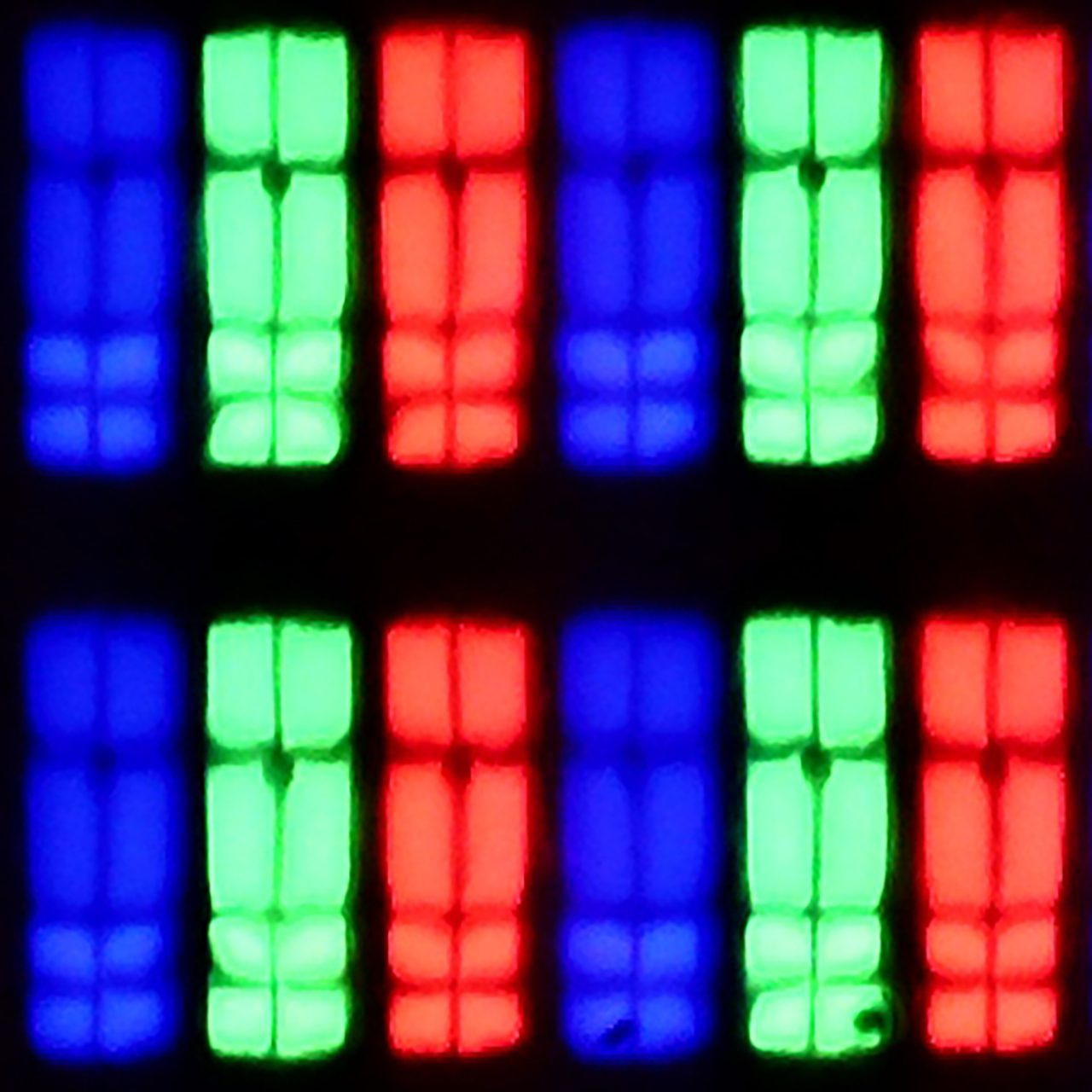
Panel uniformity:

LG 55 B4
TCL C7K / QM7K
TV features
9/10
7.7/10
- HDMI inputs0 x HDMI 2.0, 4 x HDMI 2.1 48Gbps2 x HDMI 2.0, 2 x HDMI 2.1 48Gbps
- OutputsToslink (Optical audio), eARC (HDMI), ARC (HDMI)Toslink (Optical audio), eARC (HDMI), ARC (HDMI)
- Network InterfacesWi-Fi 2.4GHz, Wi-Fi 5GHz, Ethernet (LAN) 100MbpsWi-Fi 2.4GHz, Wi-Fi 5GHz, Ethernet (LAN) 100Mbps
- TV receptionDVB-T, DVB-T2, DVB-S, DVB-S2, DVB-CDVB-T, DVB-T2, DVB-S, DVB-S2, DVB-C
Classic features:
- Recording to USB (terrestrial TV)
- Recording programming
- Picture in Picture (PiP)
- RF remote control (no need to aim at the screen)
- Backlit remote control
- Teletext
- Audio only mode
- Possibility to connect Bluetooth headphones to the TV
- Possibility to simultaneously use Bluetooth headphones and the TV speaker
Smart features:
- AirPlay
- Screen mirroring (Windows Miracast)
- Wyszukiwanie głosowe
- Voice search in native language
- Ability to connect a keyboard and mouse


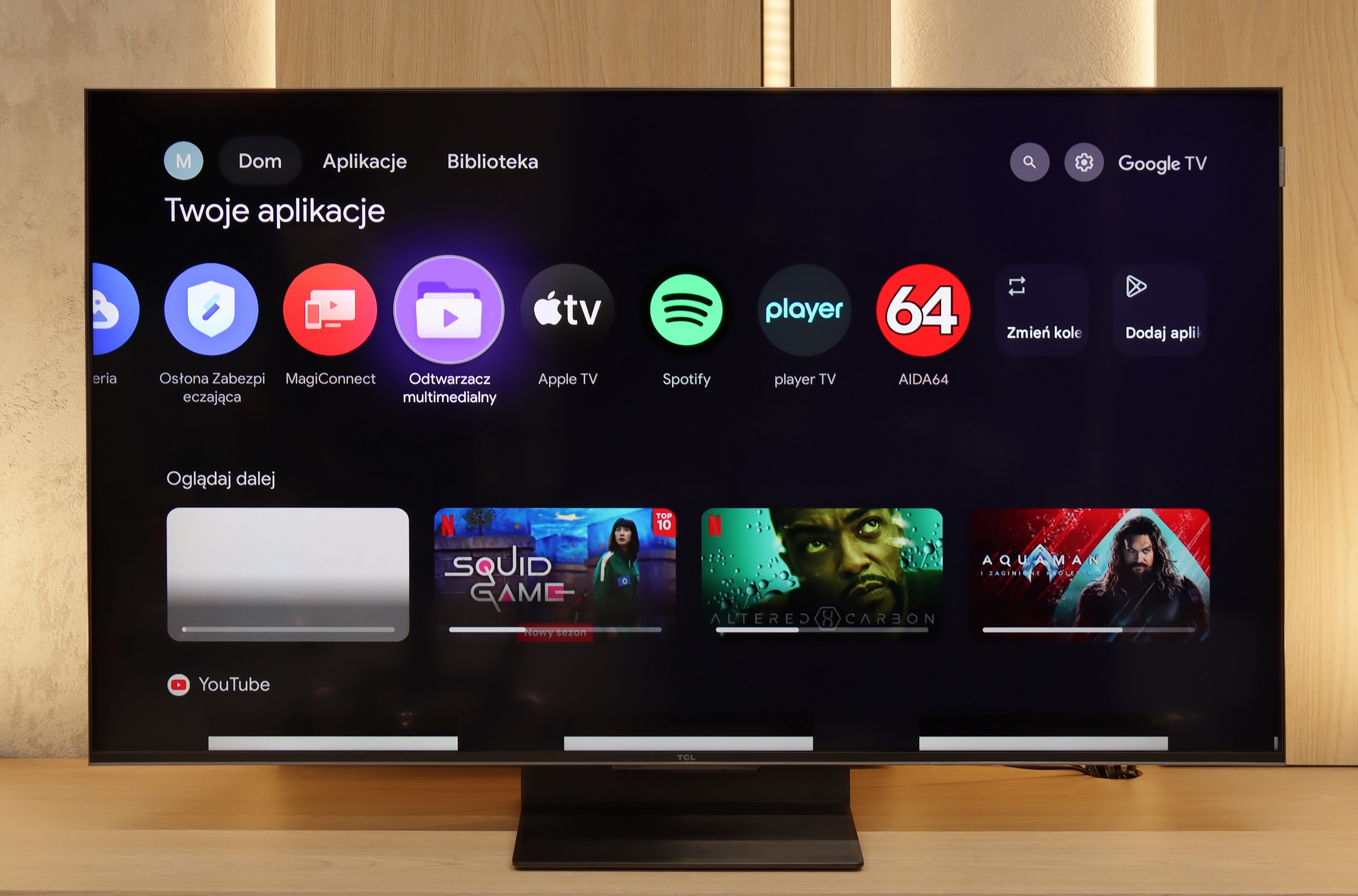
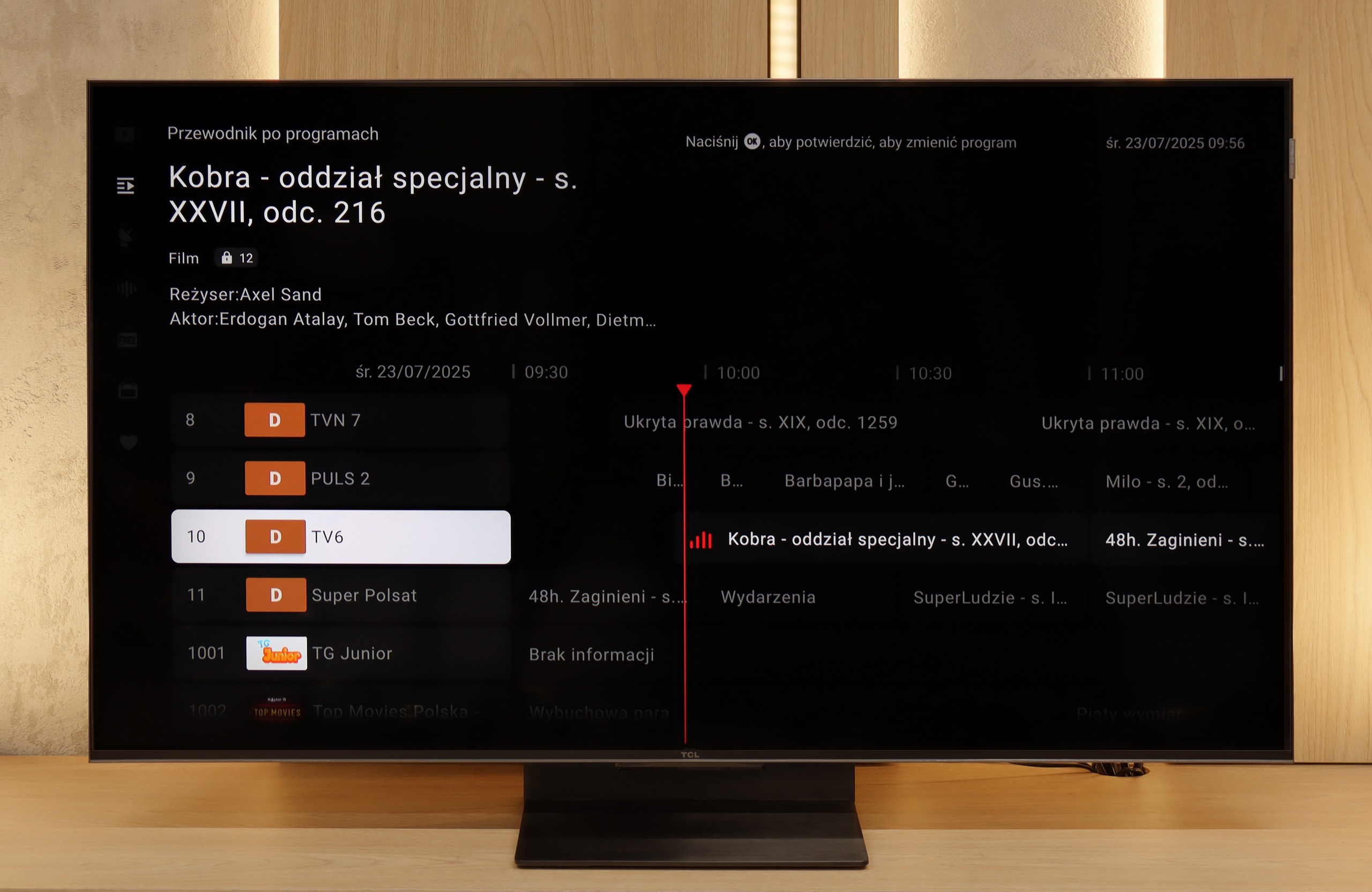
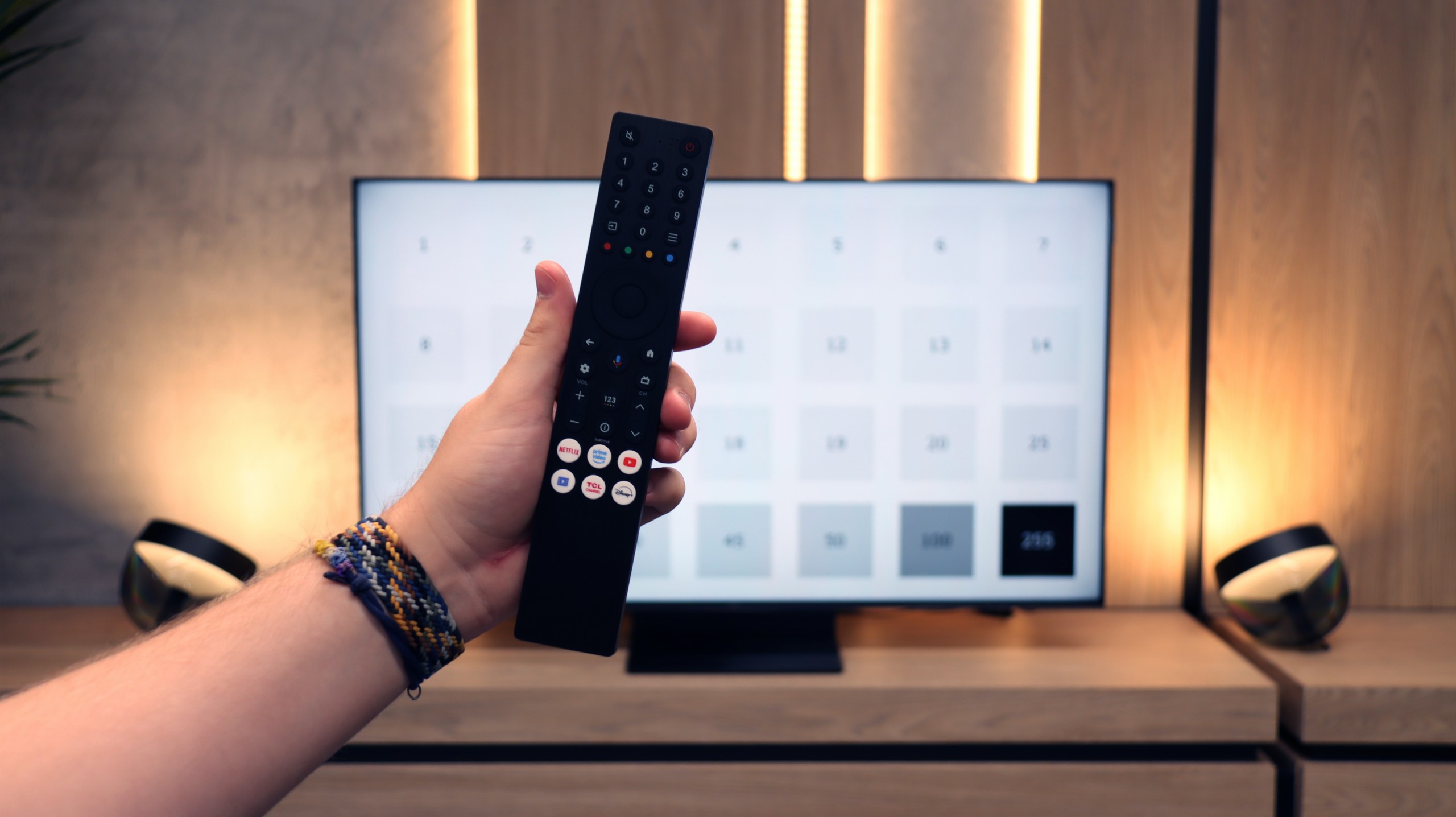
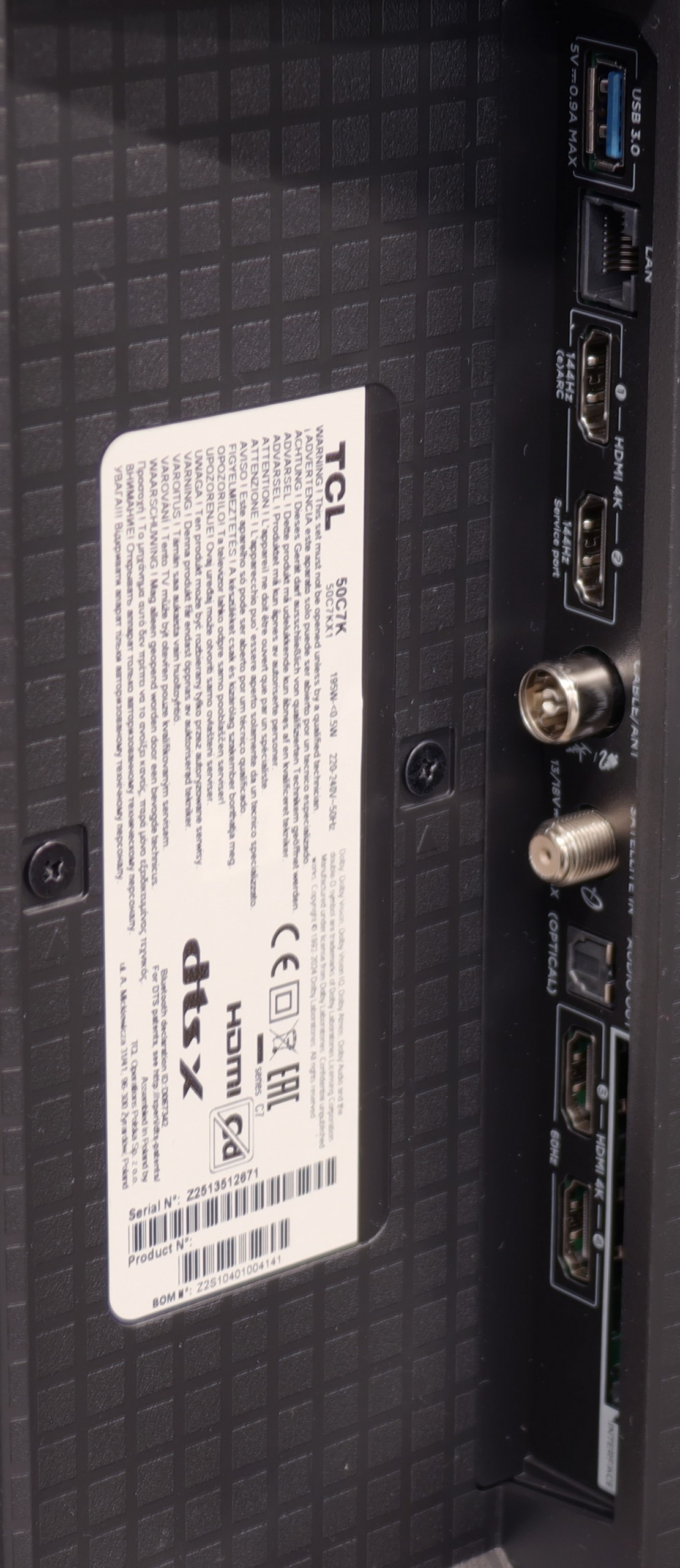
LG B4 uses the well-known proprietary system WebOS. The system offers practically all the most important applications, and those that are lacking can be counted on one hand, such as CDA or KODI.
WebOS also boasts a highly appreciated ability to perform operations using a cursor that appears when the remote control is moved. The convenience of such a feature is invaluable when entering queries or passwords for portals. WebOS, like most systems, also supports functions such as screen mirroring, AirPlay, voice search in Polish, and the capability to connect headphones via Bluetooth. On a more practical note, WebOS allows us to use both headphones and the television speaker simultaneously, which will certainly be a great help for those with hearing impairments. Among the more interesting features, particularly appreciated by sports fans, is the option to enable an alert for upcoming matches, ensuring that we never miss a broadcast. The home panel also deserves praise for allowing control of all smart devices connected to the home network. For example, the end of a washing cycle will be signalled by a notification in the top right corner.
In summary, the WebOS system, despite being less known and having certain limitations compared to Android TV, offers stable and fast operation and supports most functions that users may need. It is a solid solution for those looking for a simple and effective operating system in a television.
SmartTV: GoogleTV
The greatest strength of the TCL C7K in everyday use is undoubtedly the Google TV system. Thanks to it, we have access to an almost endless library of applications, including some more niche ones that are often unavailable on other platforms. The built-in Google Assistant understands Polish, so we can easily ask what’s on TV, what the weather is like, and even issue a few voice commands to control the television. The presence of Chromecast and AirPlay, which work smoothly and make life easier, is also a plus.
User Functions
On the downside, the classic features are somewhat lacking. Of course, we have the basics – teletext, EPG, and the ability to connect headphones – but that’s about it. There is no USB recording feature or picture-in-picture (PiP) mode, which can still be found among competitors. It’s also worth remembering that Google TV in the TCL edition can sometimes have strangely translated parts of the menu or minor errors in the interface. These are not things that interfere with daily use, but those sensitive to details may notice them.
Playing files from USB
8.5/10
9.2/10
Supported photo formats:
Maximum photo resolution:


The default file player in LG B4 definitely handles most images well, although the absence of a few equally popular formats is surprising. We can successfully play videos recorded in virtually all the most popular formats, including Dolby Vision. The only codec that LG B4 will not play is H.266 VVC, although this is currently rather unused. However, it is worth noting the supported image formats, of which there are only two: JPEG and PNG. Users of Apple devices may feel disappointed by the lack of support for the HEIC format, which is the default format when taking photos. The remedy for this is to use the built-in AirPlay feature. We will also mention the lack of support for TXT subtitles.
The built-in file player in the TCL C7K performs really very well. It supports most of the most popular audio and video formats, so if we want to quickly plug something in from a USB drive and play it – there should be no problem. Of course, as is usually the case, we can find some minor shortcomings – not every exotic codec will work (Apple's HEIC), not all subtitles will be perfectly synchronised (txt.). However, the biggest advantage of this television comes to the rescue, namely Google TV. Thanks to access to the Google Play store, we can easily install an alternative player, e.g. VLC, and then no files will be a concern for us.
Apps
8.7/10
9.6/10














































Sound
7.1/10
7/10
- Subjective sound quality:7.1/107/10
- Dolby Digital Plus 7.1:
- Dolby True HD 7.1:
- Dolby Atmos in Dolby Digital Plus (JOC):
- Dolby Atmos in Dolby True HD:
- DTS:X in DTS-HD MA:
- DTS-HD Master Audio:
The audio system built into the LG OLED B4 can be considered quite good. We can say that it performs well for its price range. The bass is quite noticeable, but does not overpower the other frequencies. It can be said that the sound is fairly well balanced. We believe that those opting for this class of display are, or will be, in possession of an appropriate audio system. Therefore, the presence of DTS-HD Master Audio and Dolby Atmos codecs is not insignificant.
To be honest, we didn’t expect much from the sound of the 50-inch version of the C7K model. Typically, in such sizes, it’s hard to get anything more than thin, flat sound. But here – a pleasant surprise. The audio proved to be really enjoyable, with good clarity and even a slightly discernible bass. This is probably related to TCL's new collaboration with the Bang & Olufsen brand, which is a novelty for 2025. Whether the C7K actually uses the original transducers from the Danish premium brand – we cannot confirm. But the end result still deserves a thumbs up. For a television without a soundbar – it sounds quite pleasant.


